March 29th, 2024 - Next destination: Corcovado
Shortly before we left, I took a picture of our lodge with the drone:
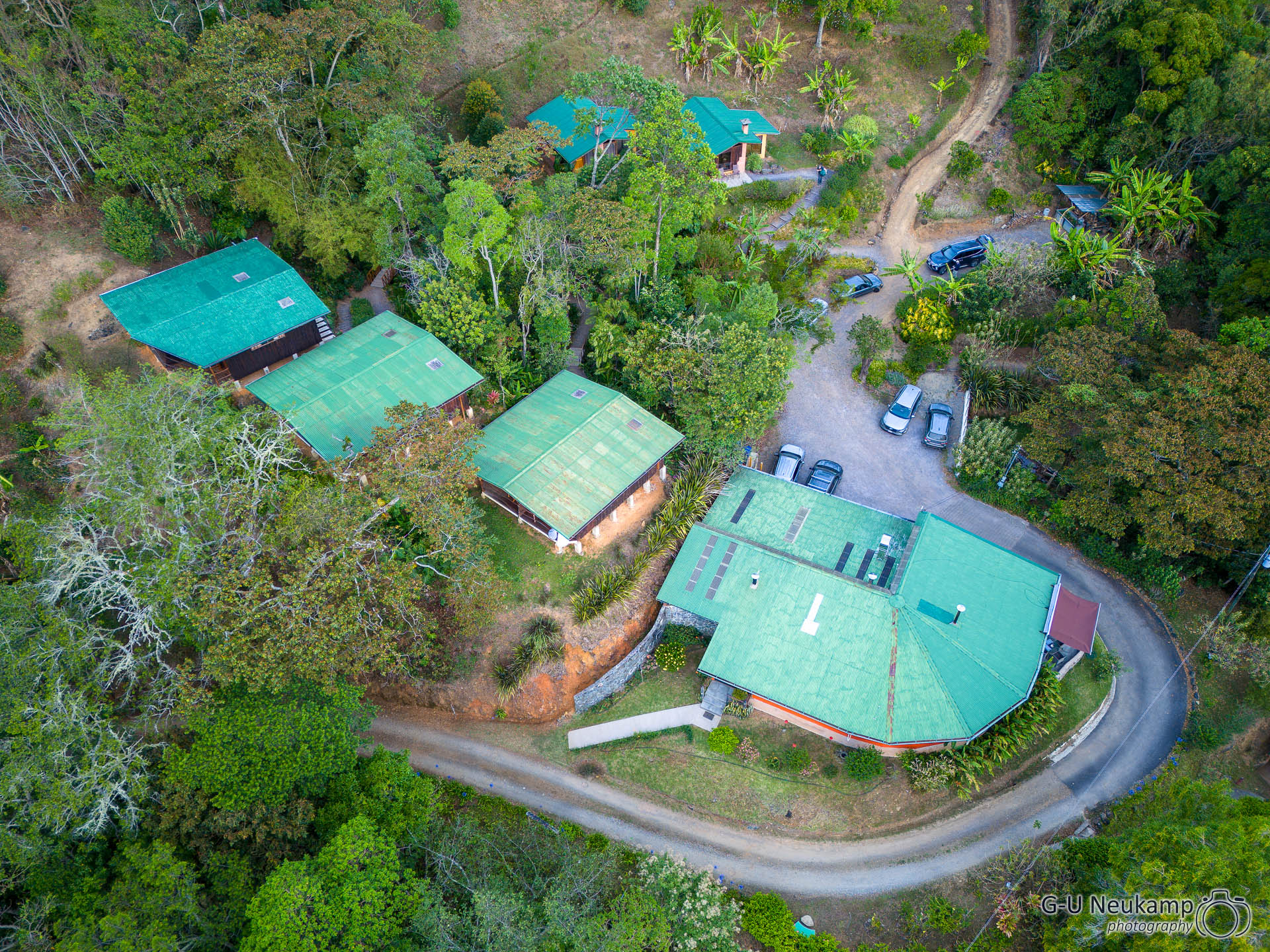
The larger building at the bottom right is the resort’s restaurant, our casita was the middle one on the left. After breakfast, we continued in our Montero 4x4 to Corcovado. We drove along the Carretera interamericana again. The weather was a little better, so the drones were in use again. The photo was taken at an altitude of 3,200m above sea level - it’s amazing that such dense forest can still survive at such heights:
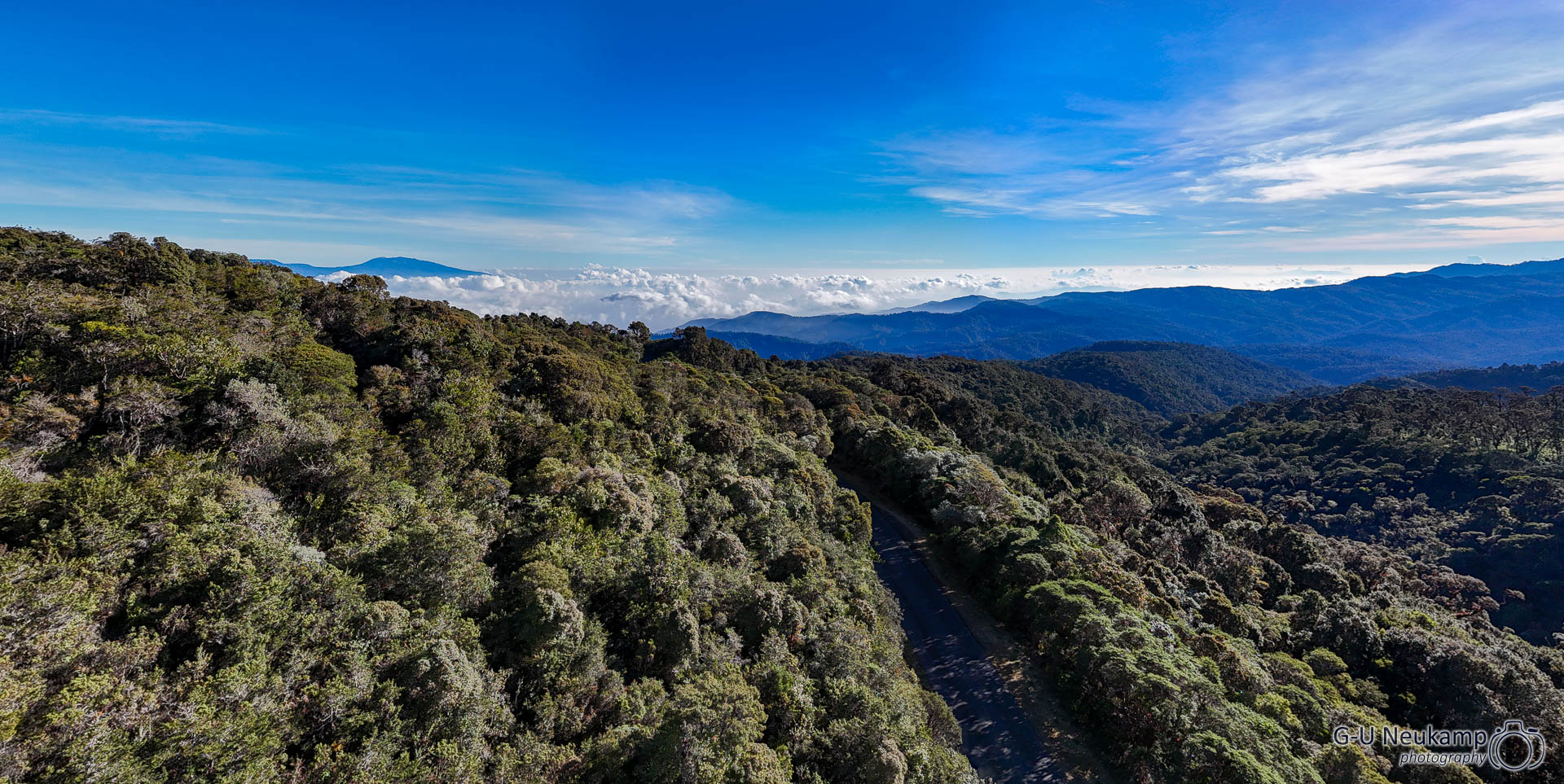
We drove on to our next destination, Corcovado National Park on Drake Bay. The approx. 200km drive took us along very winding and steep roads from an altitude of 3,300m down to the Pacific. It was 12 degrees Celsius at the highest point in the morning and 34 degrees at our destination in Sierpe with high humidity.
This was our final stop for the day, as you can only get further into the Corcovado National Park by boat. We were already expected there and parked our rental car. There is a large jetty in Sierpe, from where we took the boat across the Rio Sierpe to our lodge, Rancho Corcovado, at 11:30 am. As we still had some time before the boat left, we had some snacks in a restaurant at the jetty. You shouldn’t swim in the Rio Sierpe:
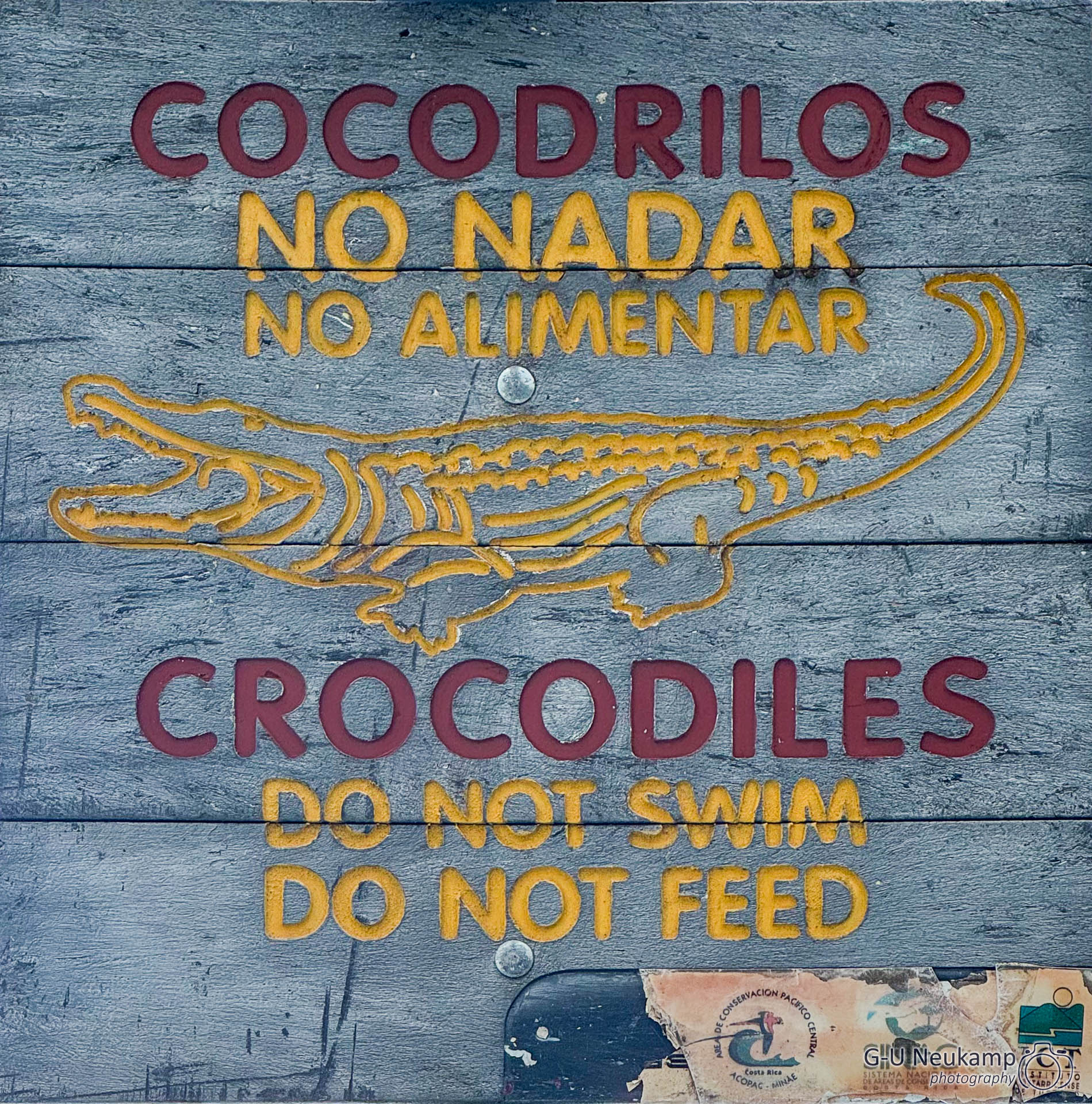
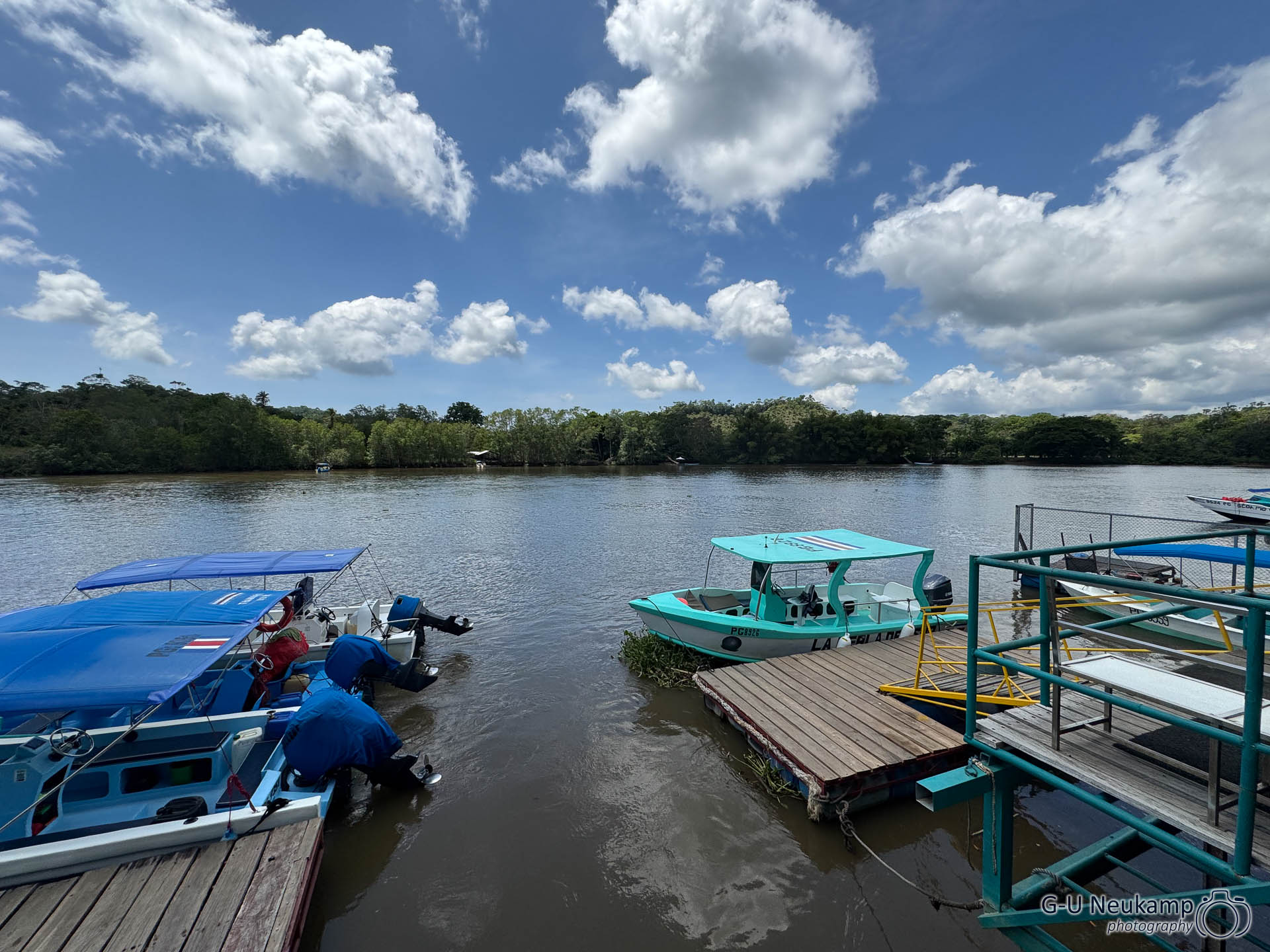
Just in time at 11:30 a.m., our boat set off for Rancho Corcovado. As the boat began its journey, Andrea spotted two scarlet macaws in an almond tree, which were one of the main motives for our visit to Corcovado.

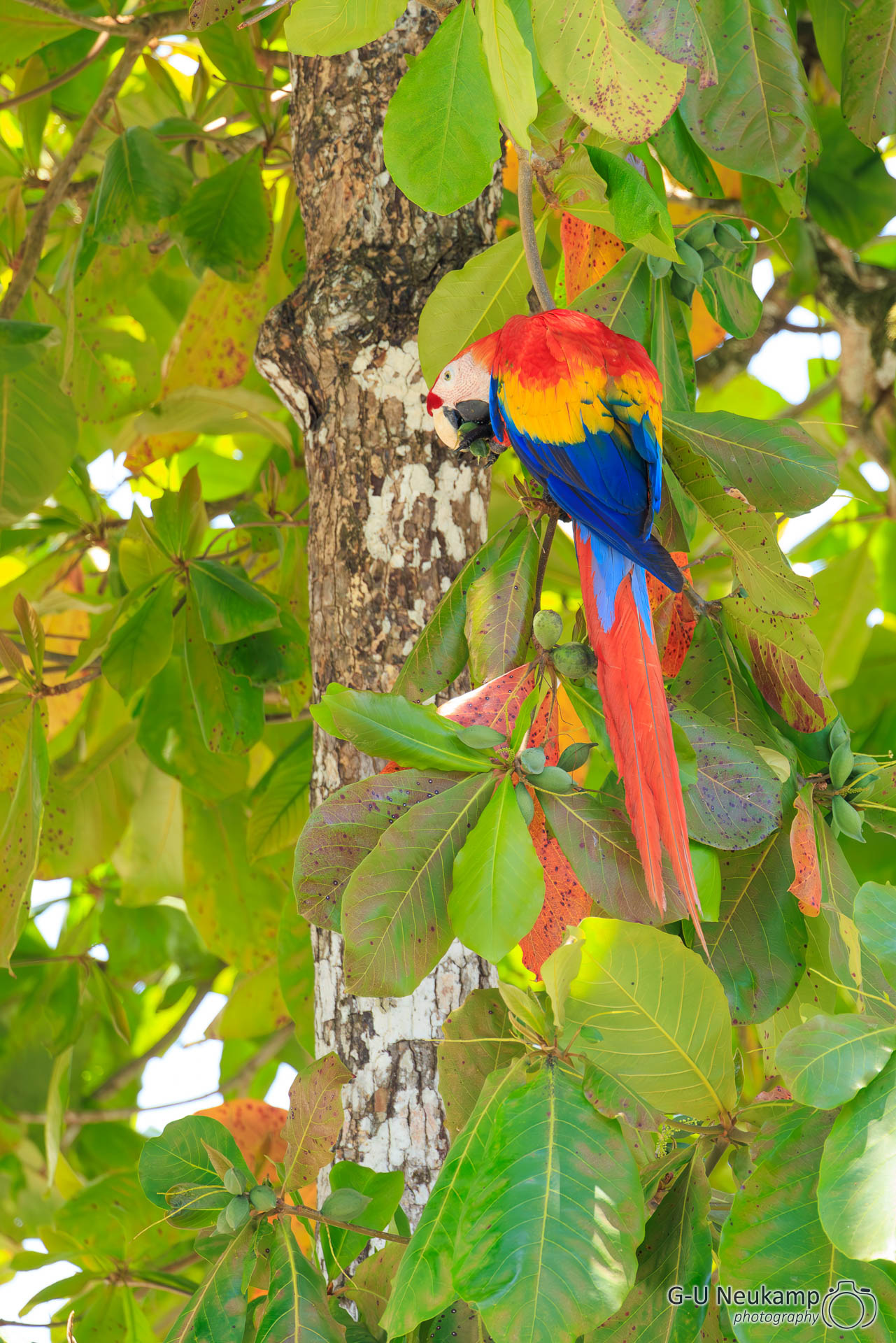
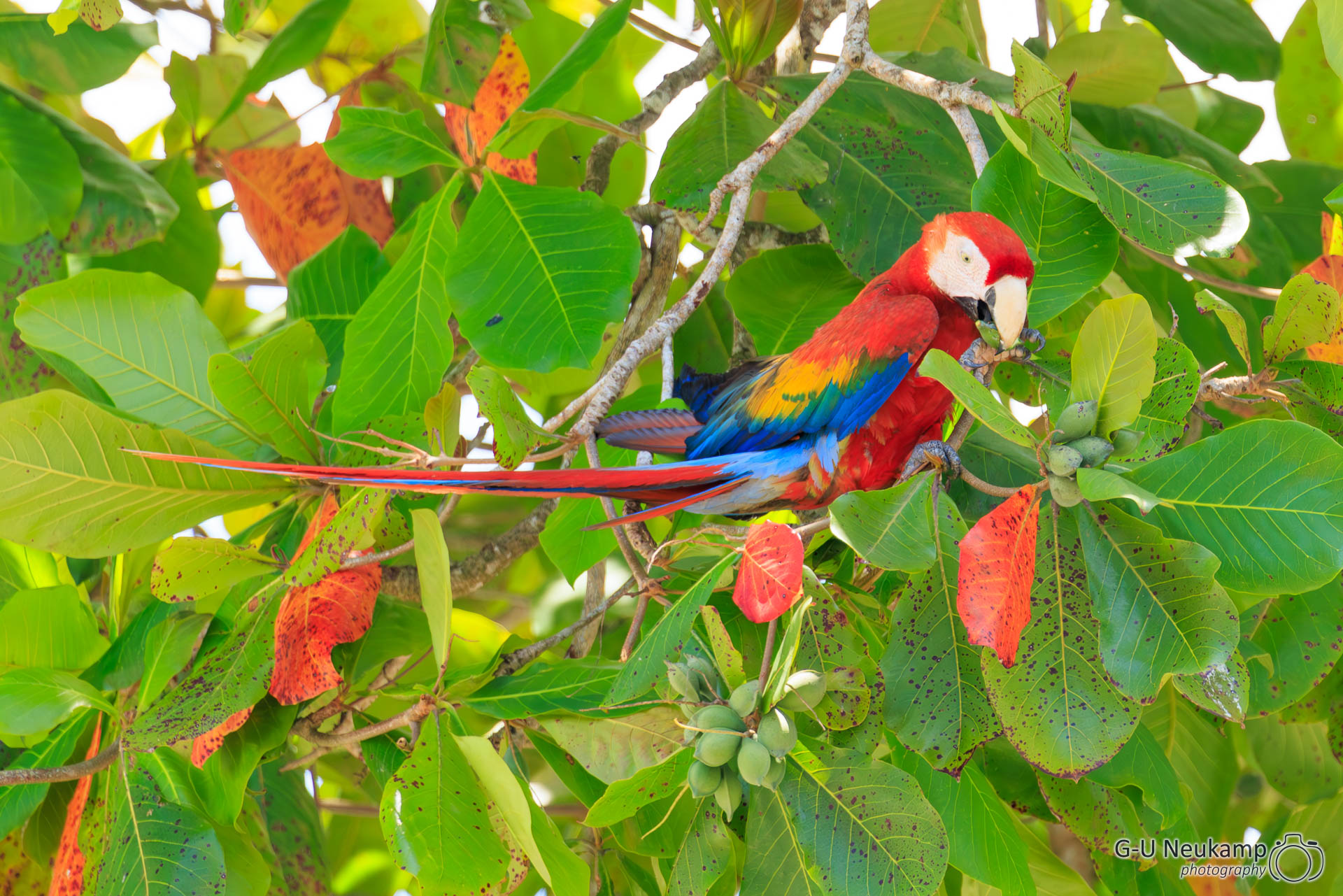
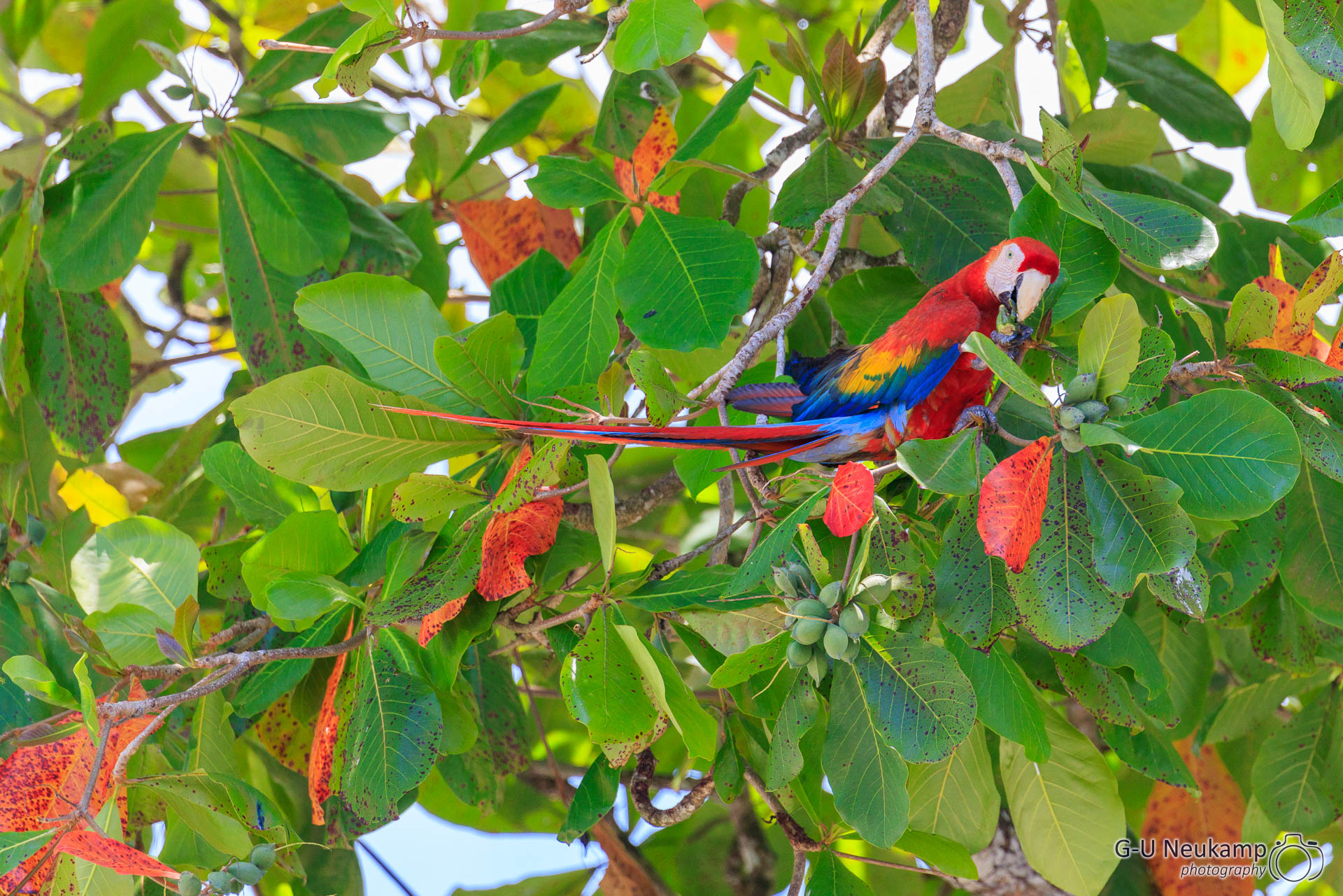
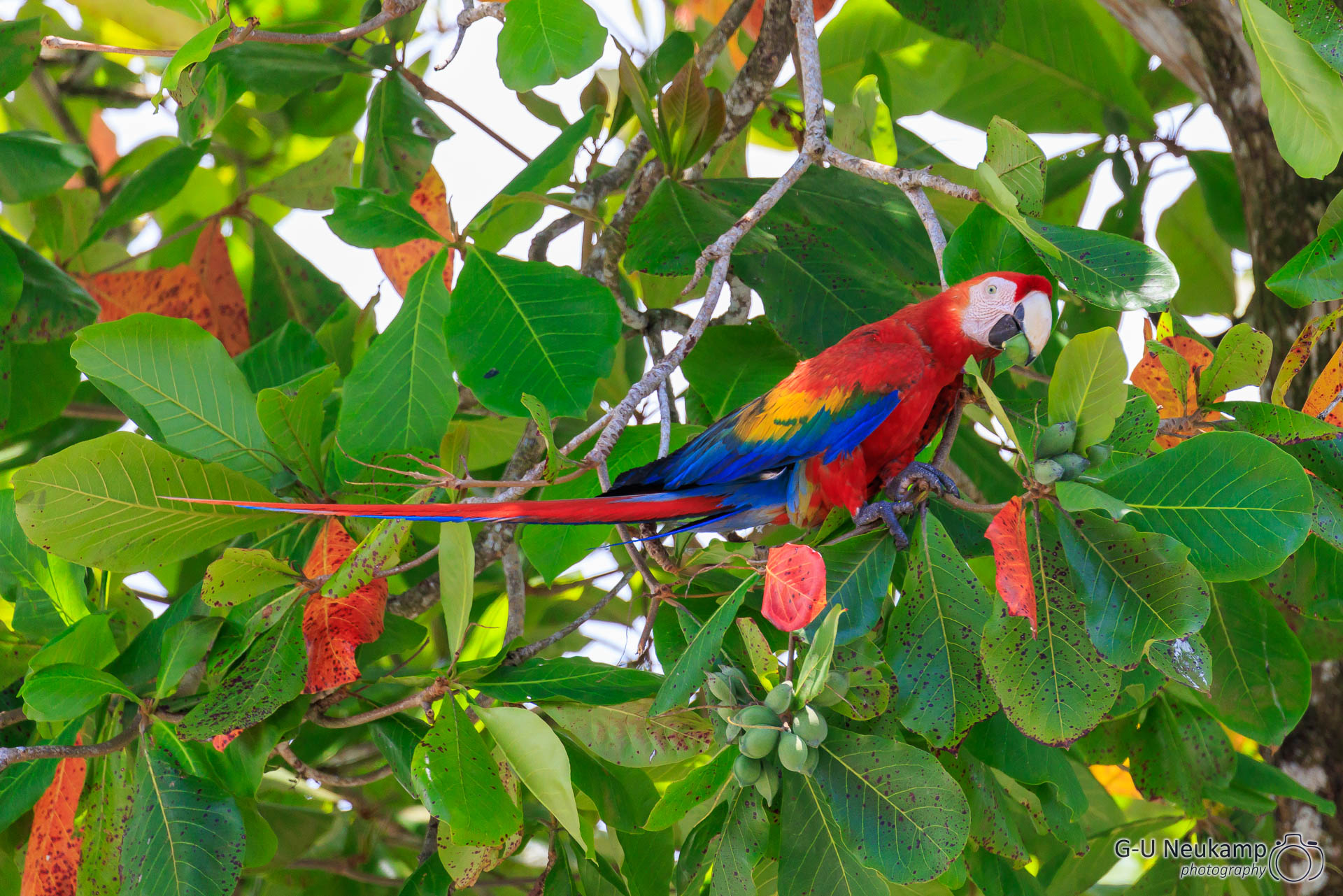
So we’ve already done that 😉
Corcovado National Park is located on the Osa Peninsula in the southwest of Costa Rica and is one of the most biologically diverse places on earth. The park, which was founded in 1975, covers around 424 square kilometers and protects an impressive range of flora and fauna. Corcovado is particularly known for its tropical rainforests, mangrove swamps, freshwater and coastal ecosystems.
The national park is home to a variety of animals, including jaguars, tapirs, harpy eagles, scarlet macaws, spider monkeys and many other rare species. Due to its remote location and strict protection measures, Corcovado National Park offers visitors the opportunity to experience nature in an almost untouched form.
There are various hiking trails in the park that lead through dense rainforests, over rivers and along secluded beaches. The park is a paradise for nature lovers, biologists and adventurers who want to experience Costa Rica’s unique biodiversity up close.
We sat on benches in the boat and couldn’t lean against anything. When we left the river delta and entered the Pacific, the captain turned up the speed and the rest of the journey was extremely bumpy. We were sitting right at the front and the boat kept banging hard on the water due to the waves.
After about a 1-hour boat trip, lastly on the ocean, we arrived at our accommodation, the Rancho Corcovado Lodge, and realized that there was no jetty 😳.
So it was time to take off our shoes and walk through the shallow water to the beach.
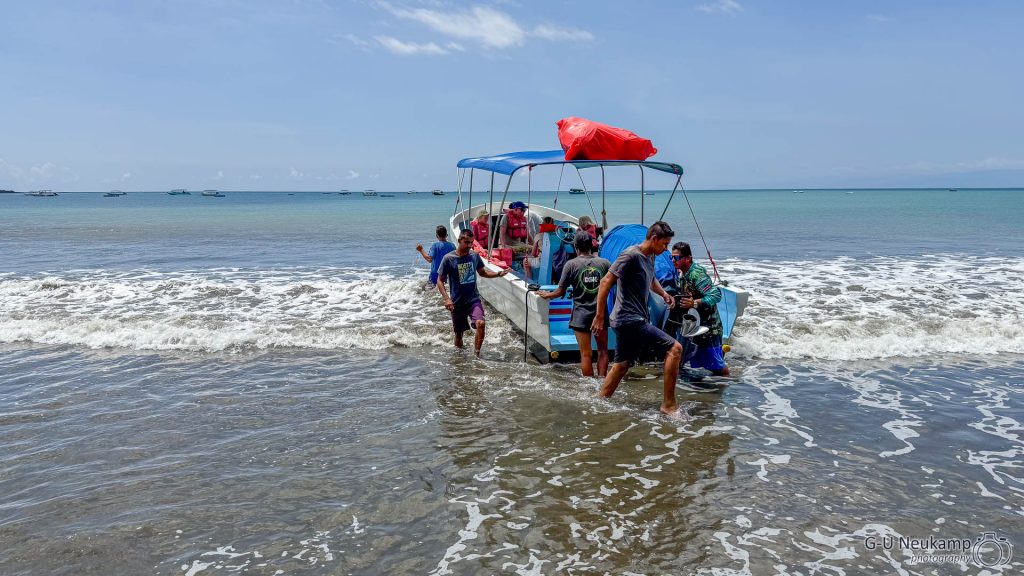
Finally back on solid ground, we were greeted by the very kind manager Julia. With a welcome drink in our hands (cool coconut water), we were briefly explained the arrangements and received our room keys. We had very nice rooms with a balcony facing the beach. You could hear the sound of the sea and the waves crashing on the beach.
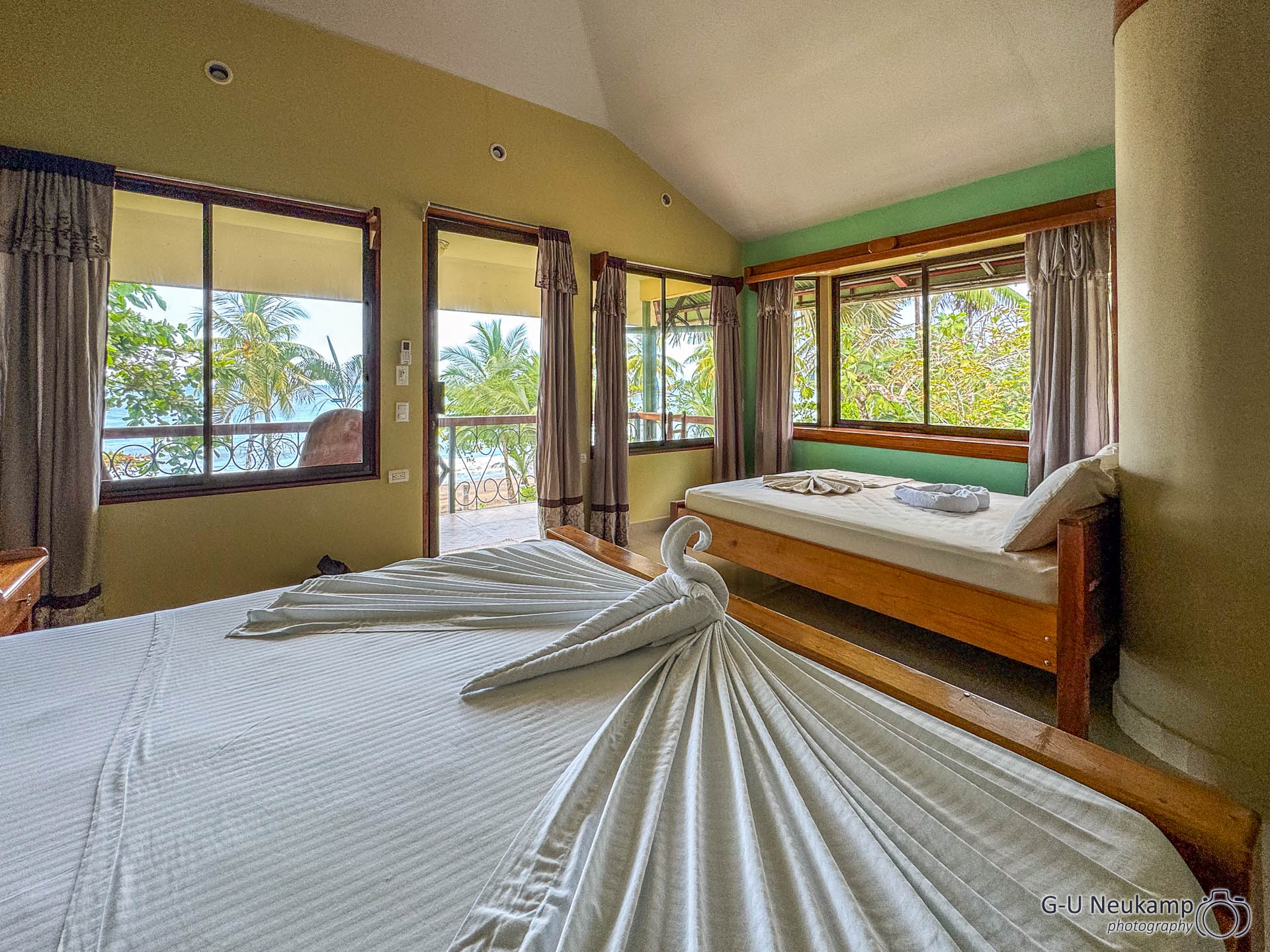
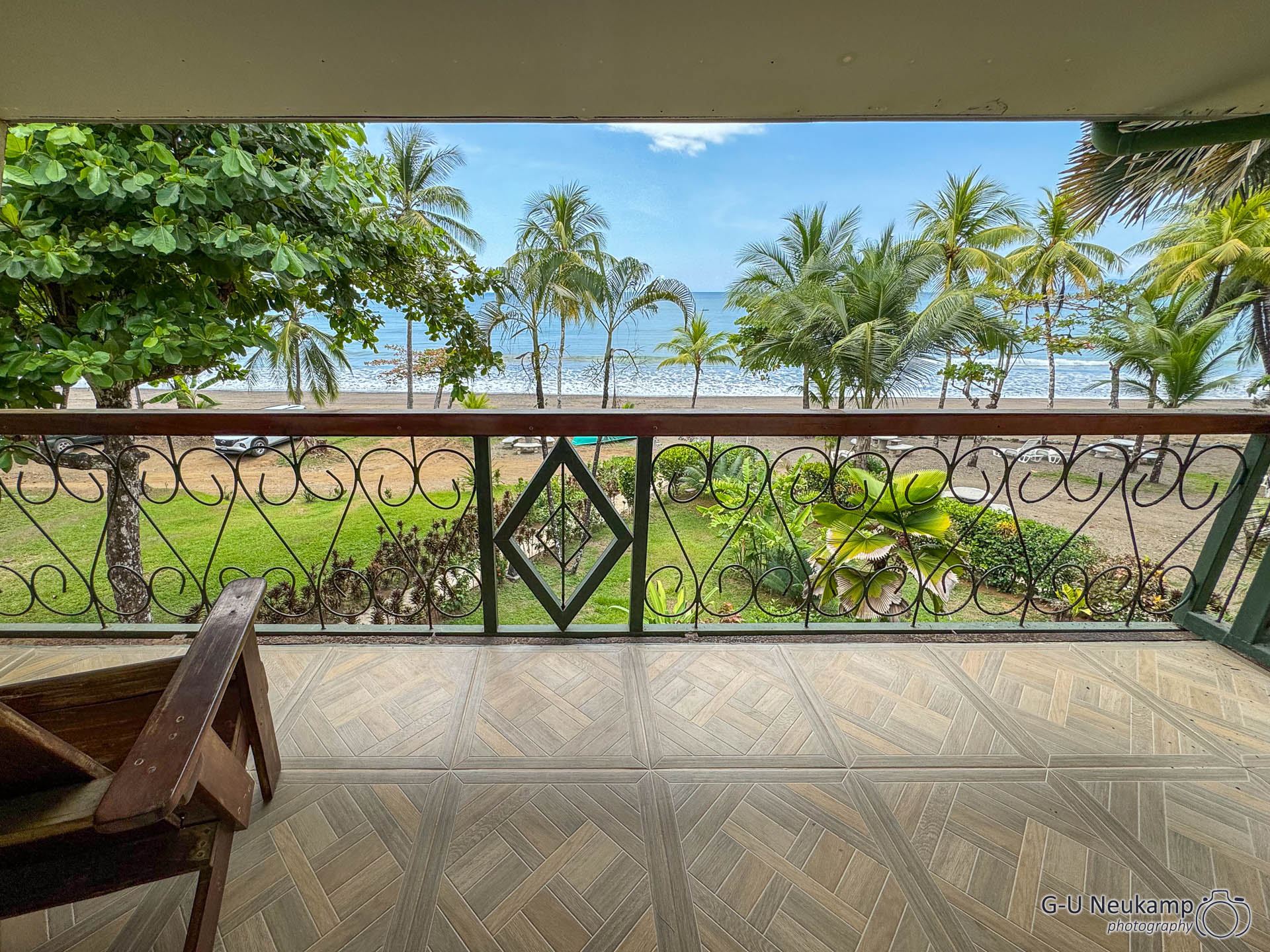
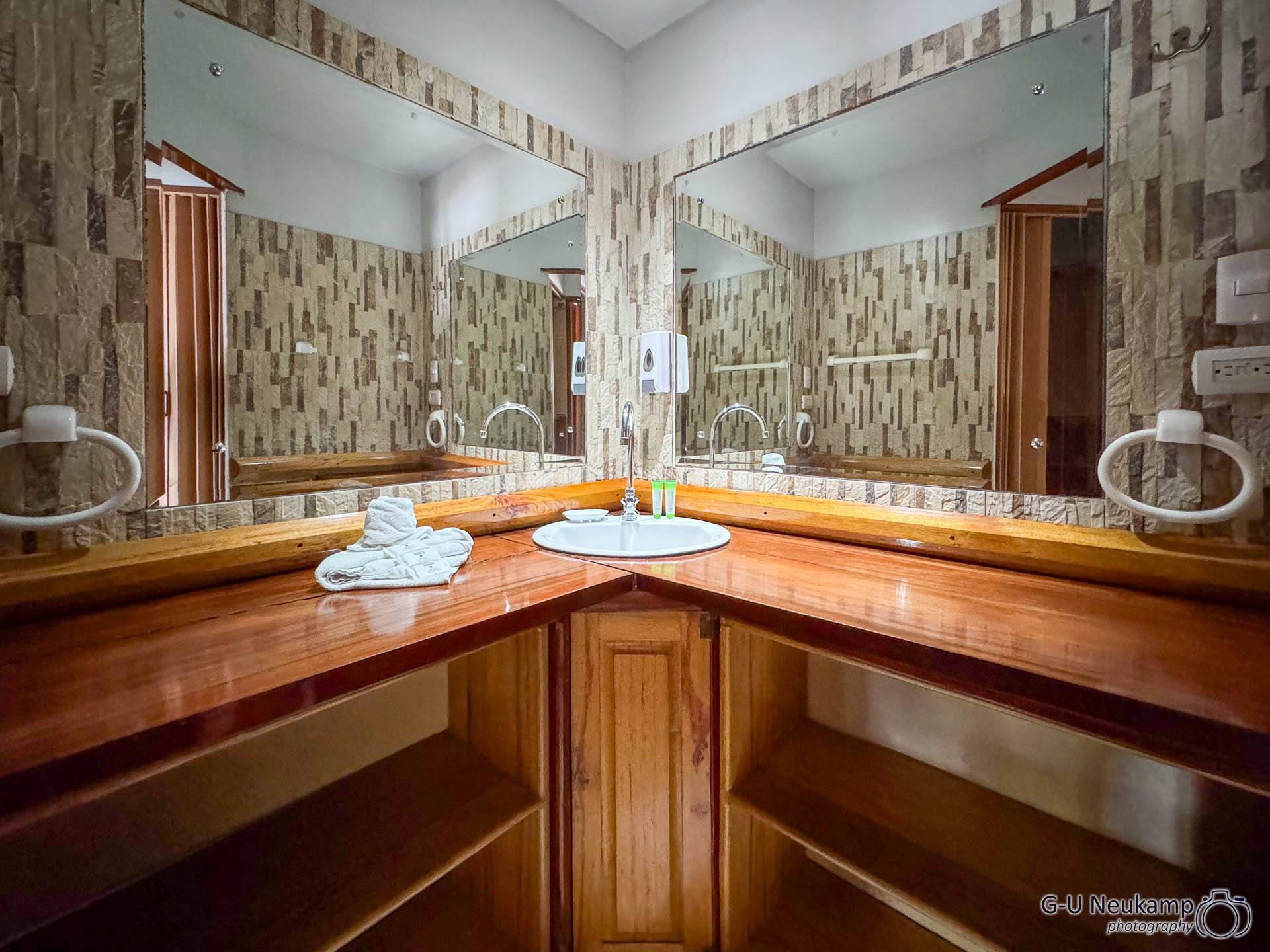
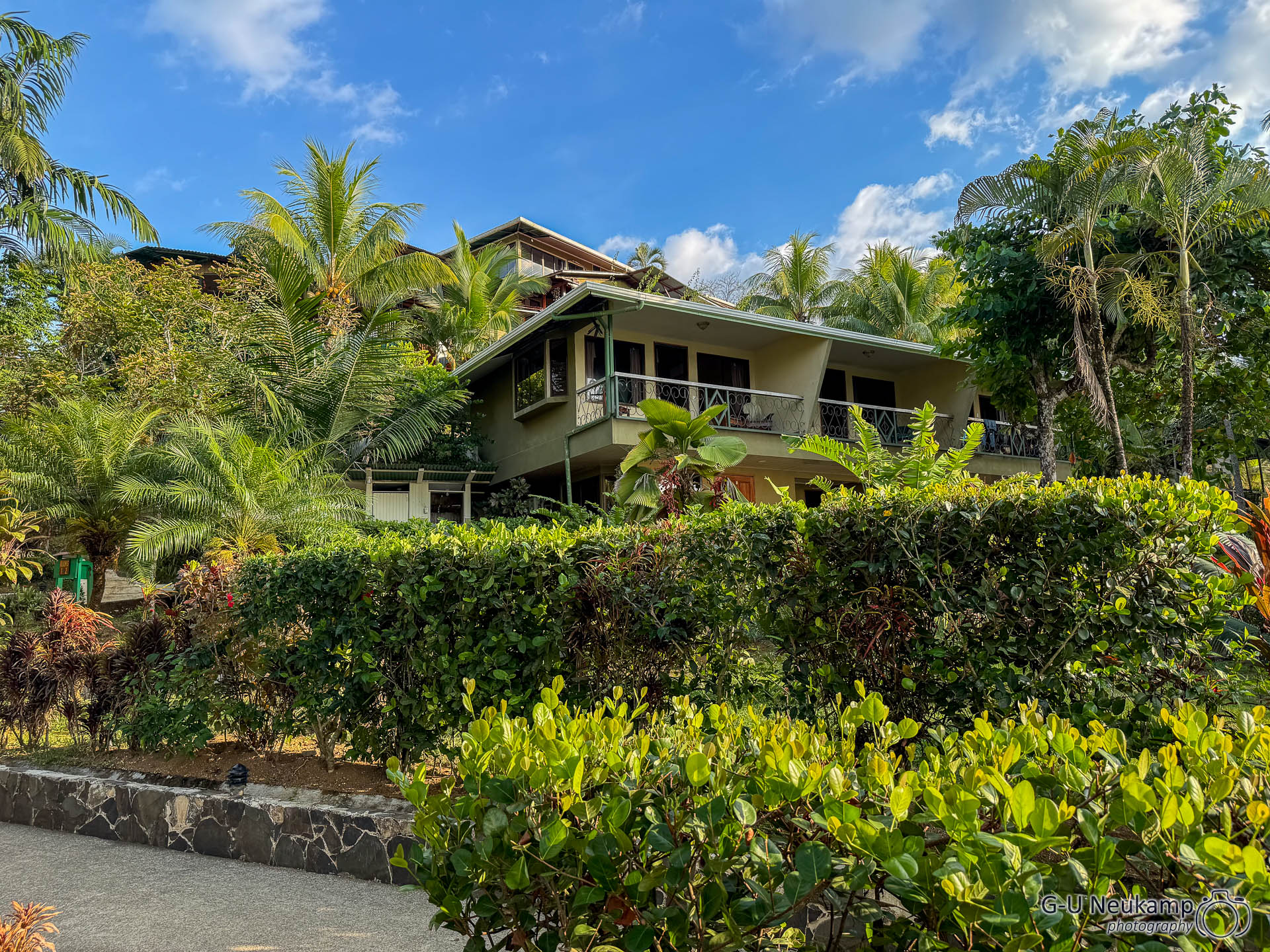
We were then expected for a very tasty lunch. Due to the remoteness of the location, we had again booked full board at the Rancho Corcovado. After lunch and a short break to relax in our air-conditioned room, we went for a walk along the beach, where the water was pleasantly warm. We then launched the drones at sunset.
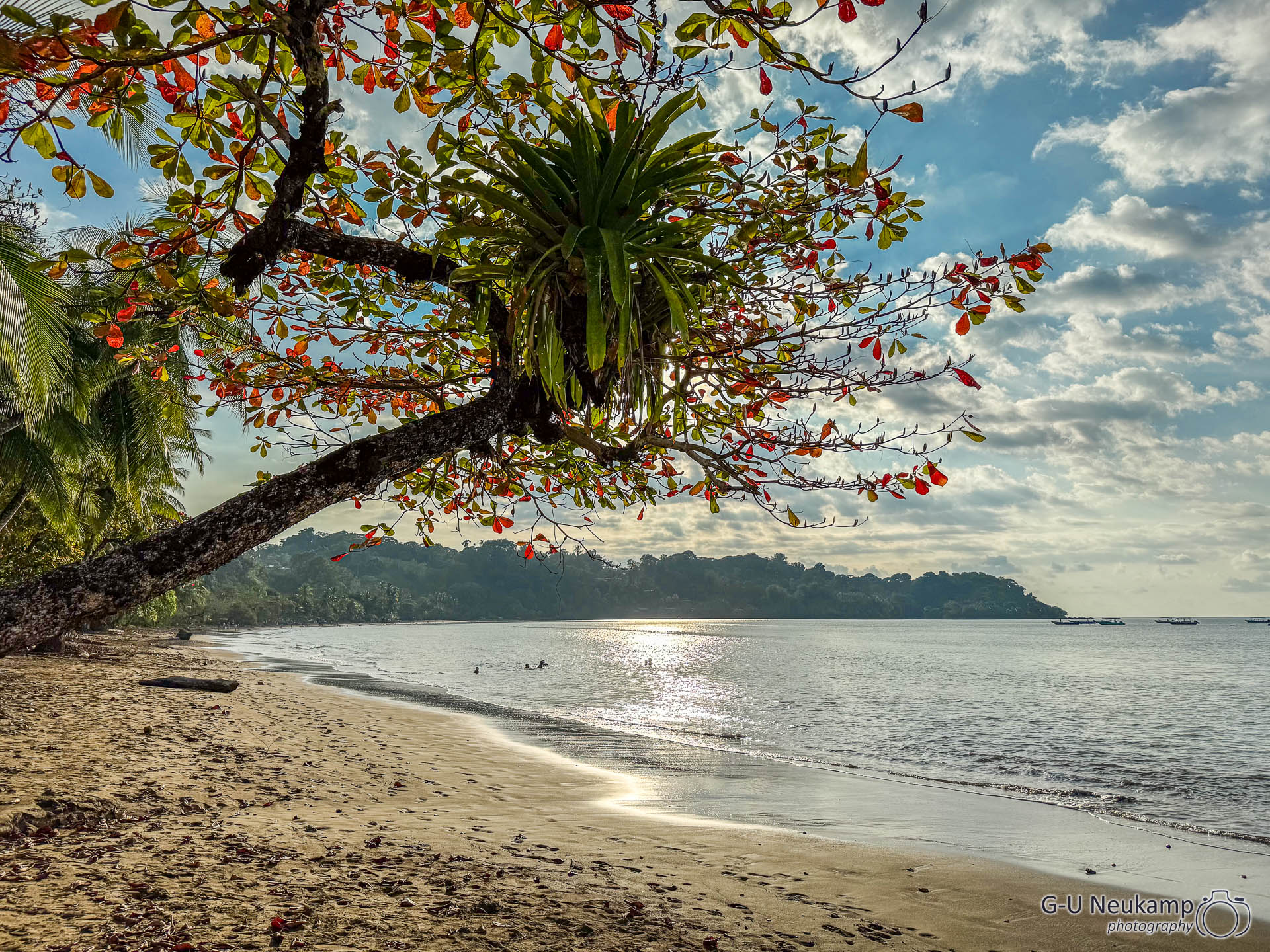
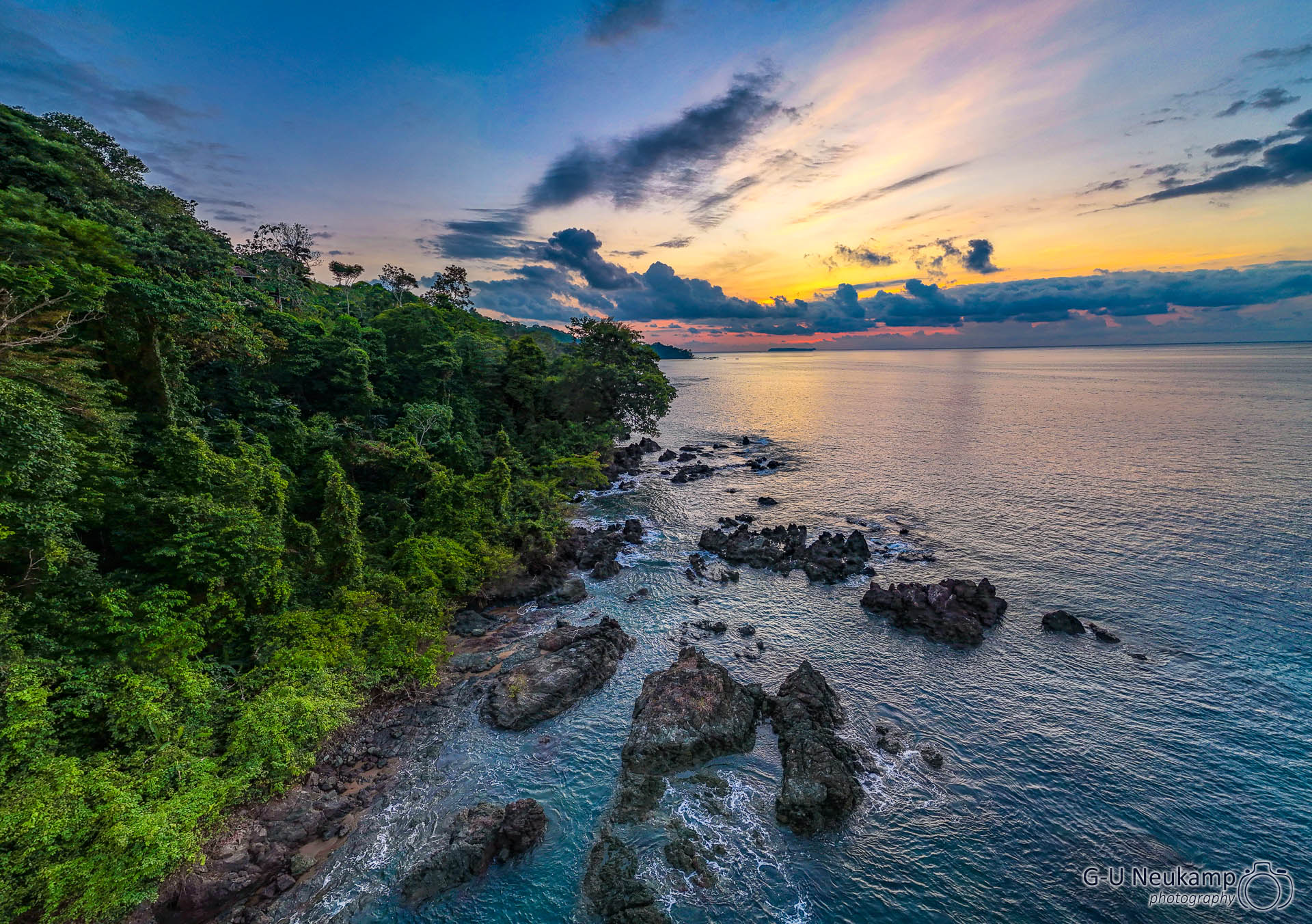
We then had dinner at around 6:30 pm. After that we went to bed quite early, tomorrow we start a snorkeling tour at 7:15 am 🤿.
March 30th, 2024
We all slept well and met for breakfast at 6:30. At 7:15 we met our snorkeling guide and fellow snorkelers at the meeting point. From there, we took the boat across the Pacific to Isla del Caño for more than an hour.
Isla del Caño is a small island off the Pacific coast of Costa Rica, around 16 kilometers from the Osa Peninsula. It is known for its extraordinary underwater world and is part of the Isla del Caño Biological Reserve. The island itself is densely forested and has a variety of tropical plants, but its main attraction lies beneath the surface of the water.
Around the island there is a nature reserve that is strictly protected by rangers. On arrival, we passed a ranger boat and were given an intensive introduction to the art of snorkeling and the local rules by our guide (the last time I snorkeled was when I was still at school 🤔).
In order to be clearly visible, snorkeling is only permitted with a easily recognizable life jacket. It was not allowed to leave the group led by the guide. All of this was meticulously monitored by the rangers driving around in boats!
Then we went into the sea. It was great to watch the many colorful fish in the reef near the shore. How good that I had bought a waterproof case for my iPhone and taken it with me. With a short break on the beach at Isla del Caño, we dived at two locations for about 45 minutes each.
When I got back on the boat after the first diving tour, it happened: I lost my iPhone in the water. I had almost written it off, but after some searching our guide found it on the seabed, dived down and brought it back up. Here is a picture of our guide in action:
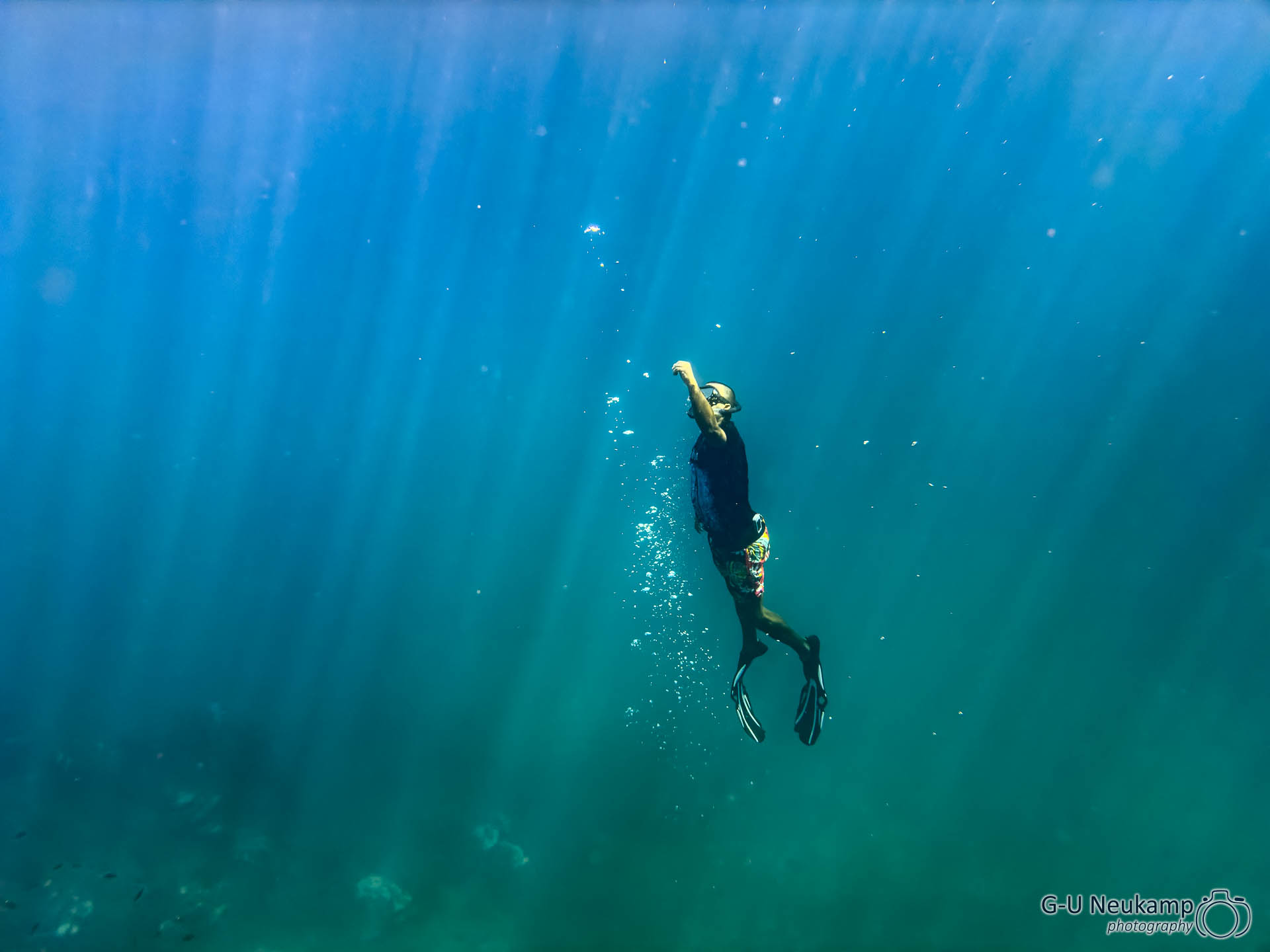
As a reward, he received a generous tip at the end of the tour.
The highlight of the snorkeling tour, however, was observing the numerous turtles living there:
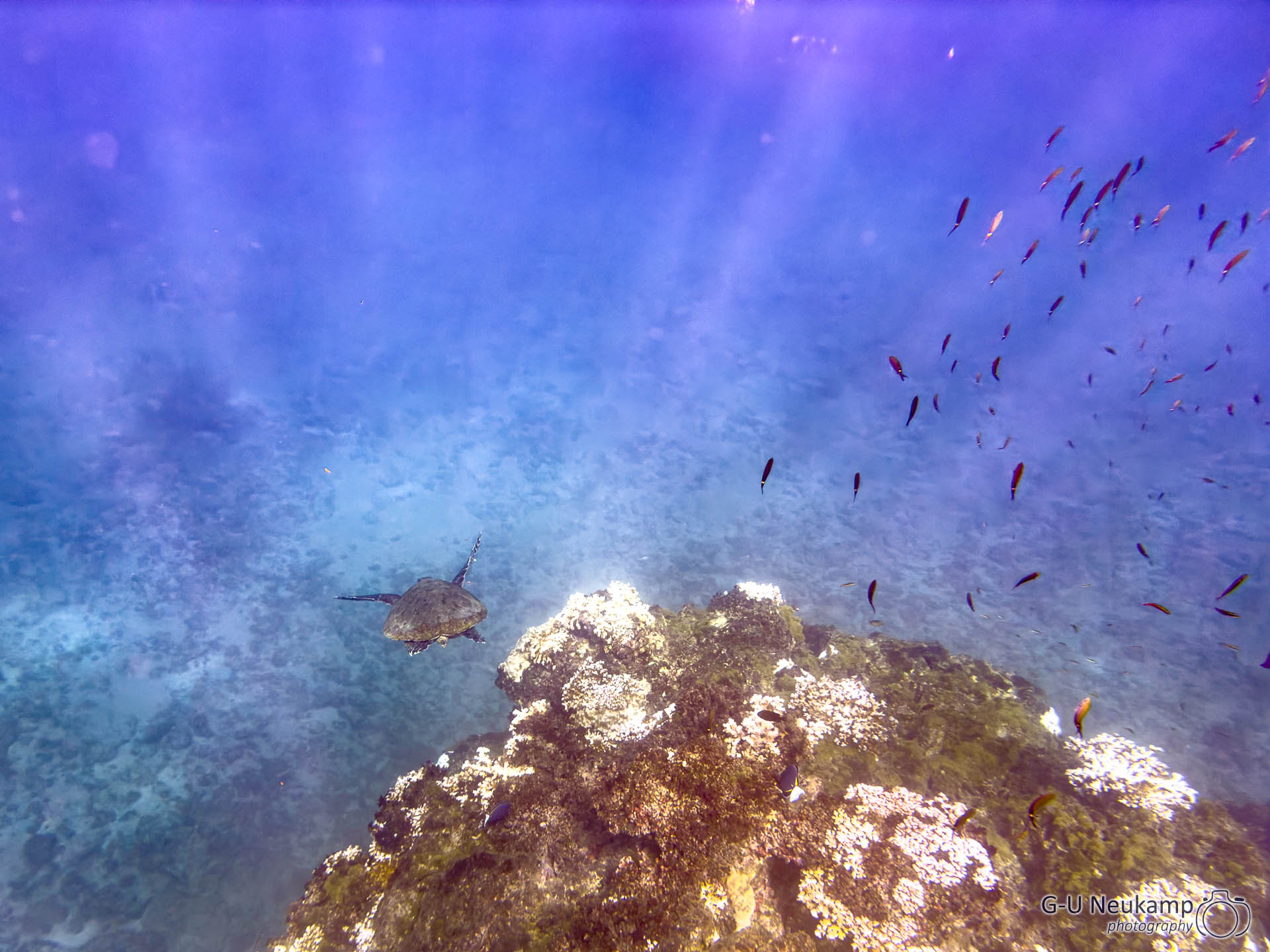

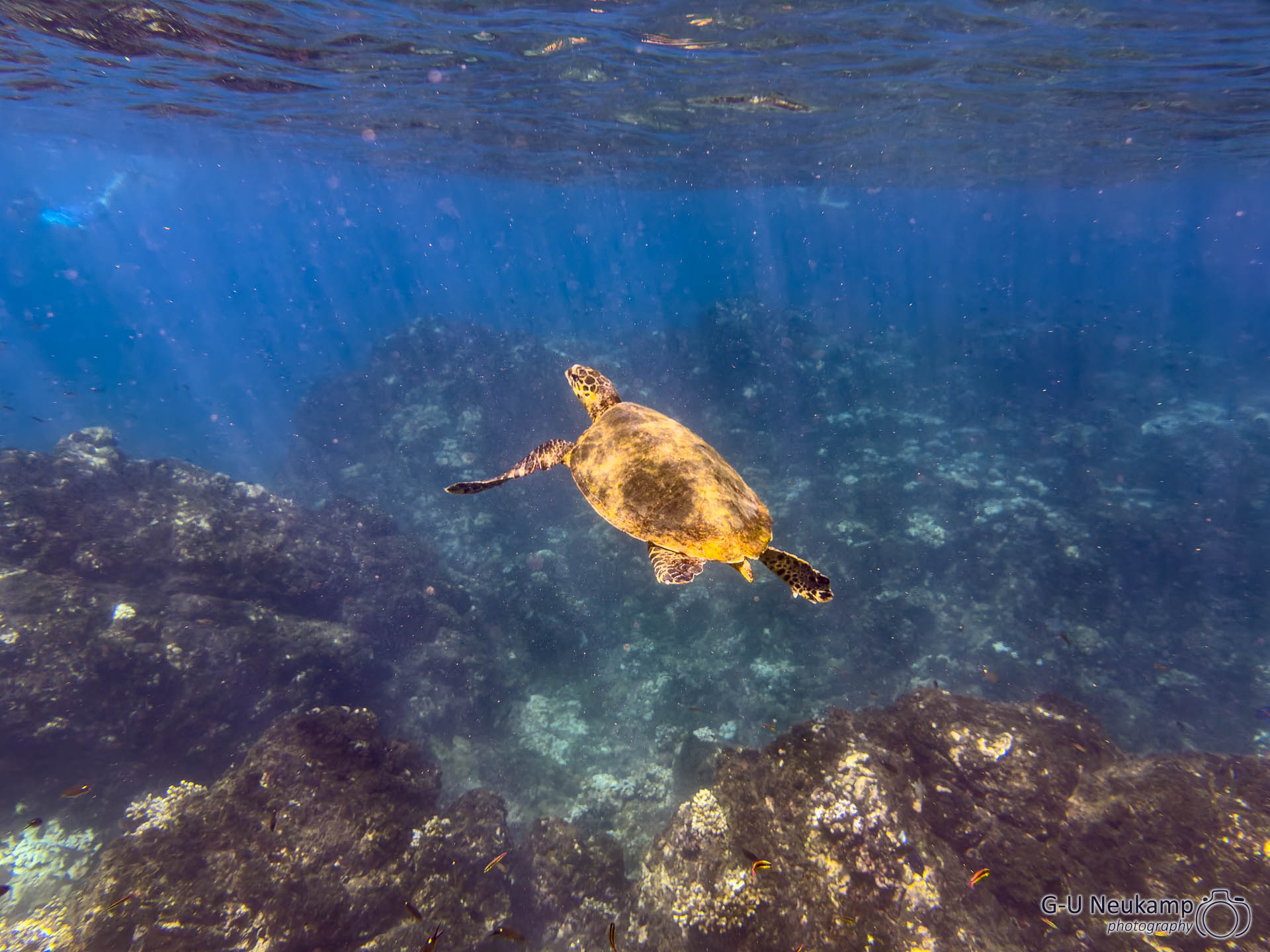

It was a fantastic experience, but also quite exhausting. After another one-hour drive back, we arrived back at our hotel completely exhausted. As scarlet macaws had been spotted in the trees on the beach shortly beforehand, we went for another long walk along the beach.
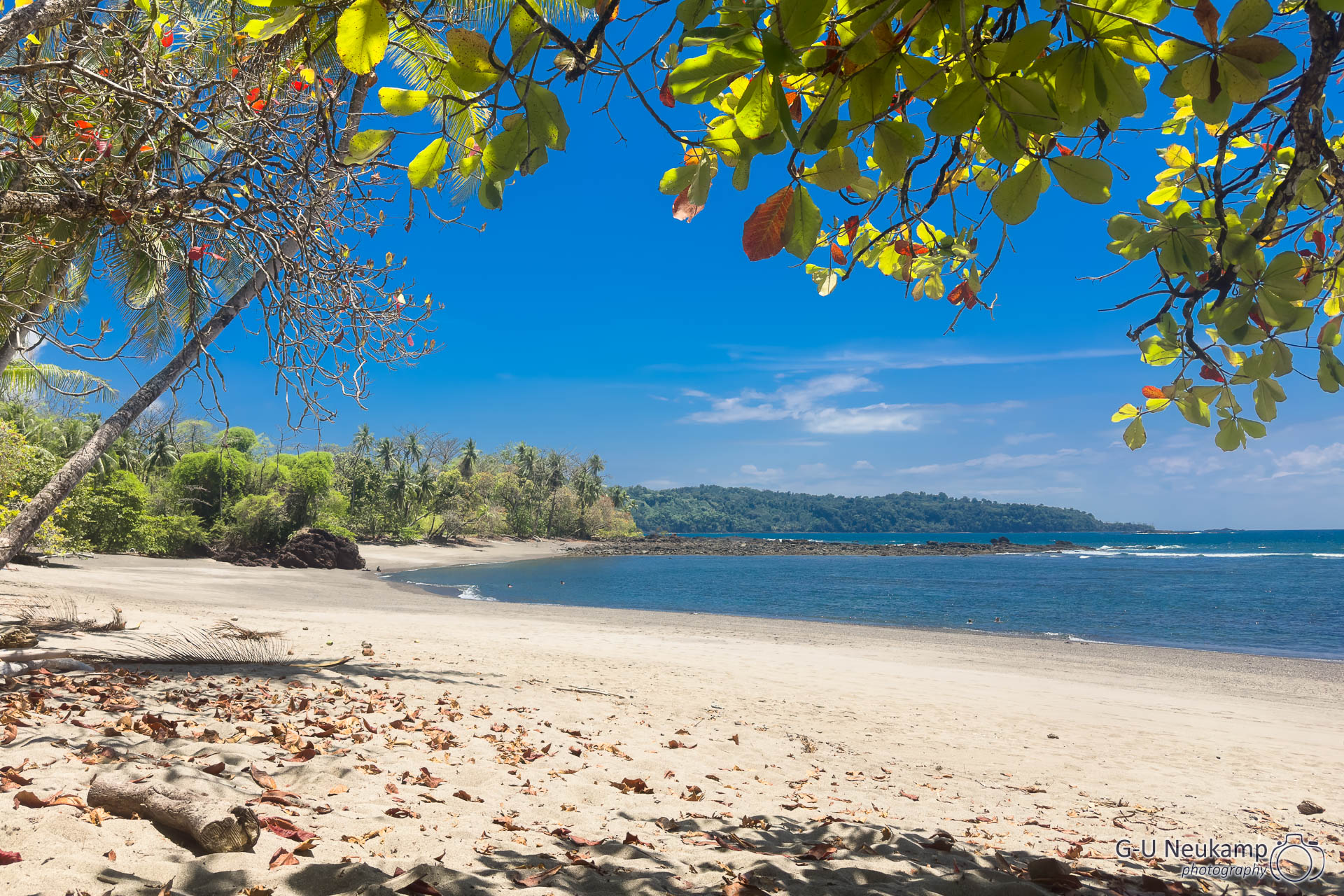
Unfortunately, we didn’t spot any more of the beautiful birds. Afterwards we all met up again in the hotel restaurant for lunch. Our manager Julia invited us into her office at the entrance to the restaurant, where she then showed us a Black-mandibled Toucan (Ramphastos ambiguus) sitting in a palm tree right in front of her window, eating some dates with great pleasure. This created a luxury problem for animal photographers: the bird was simply too close. 😉
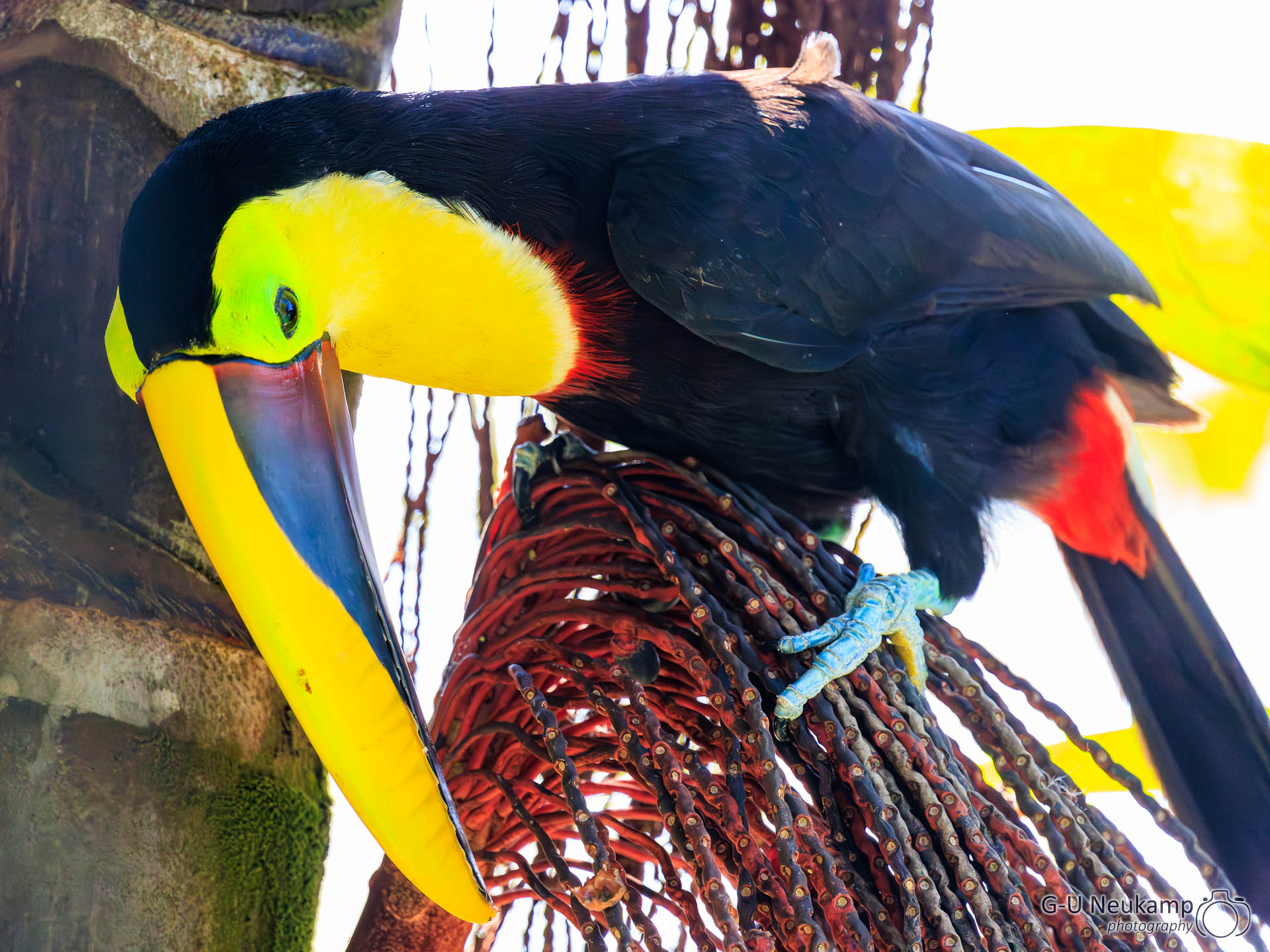
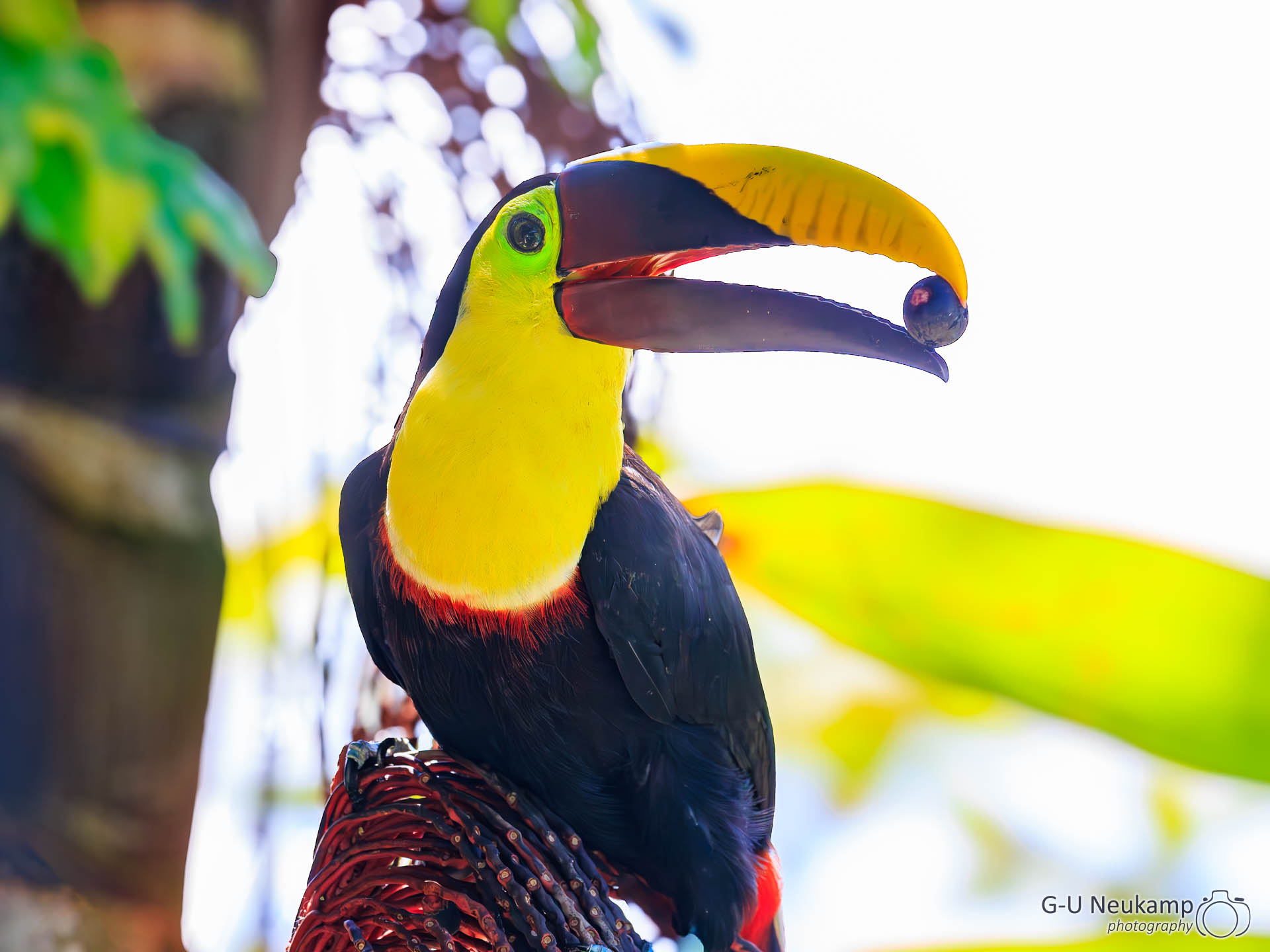


We then relaxed in our air-conditioned rooms and enjoyed a locally recommended tropical cocktail with coconut, a Coco-Loco, in the afternoon. It contained local rum (cacique, the Brazilian version is cachaça) and was very tasty.
In the evening, another beautiful sunset was on the horizon, so we launched the drones again:
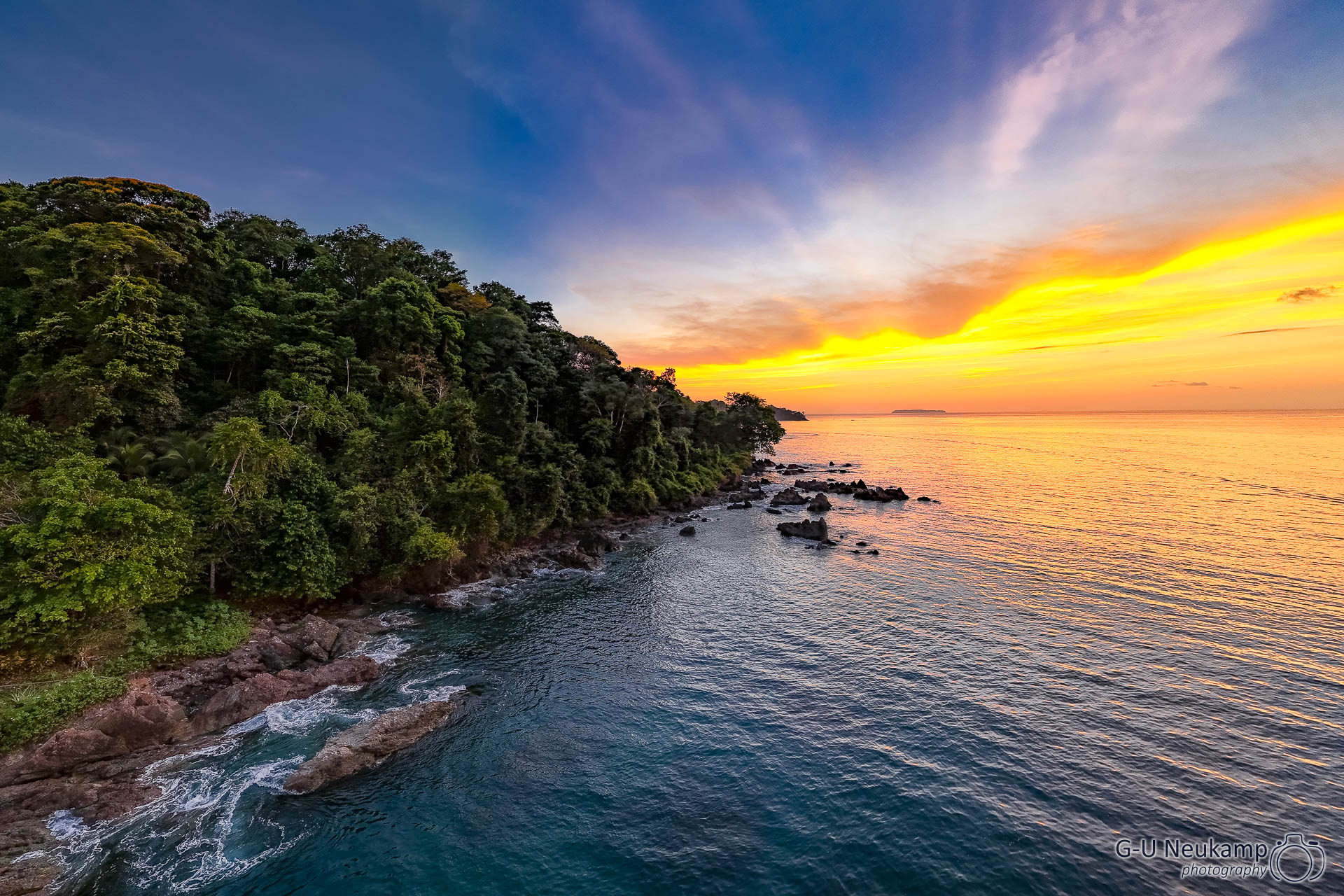
March 31st, 2024
This morning we went on one last guided hike in the Corcovado National Park. We set off early in the morning at 6:00 a.m. with our guide Manuel for a 20-minute boat ride to the ranger station, where our backpacks were meticulously checked (plastic, knives, tobacco etc. were prohibited). Once again, we were warned about crocodiles. The national park may only be entered under the guidance of an experienced guide.
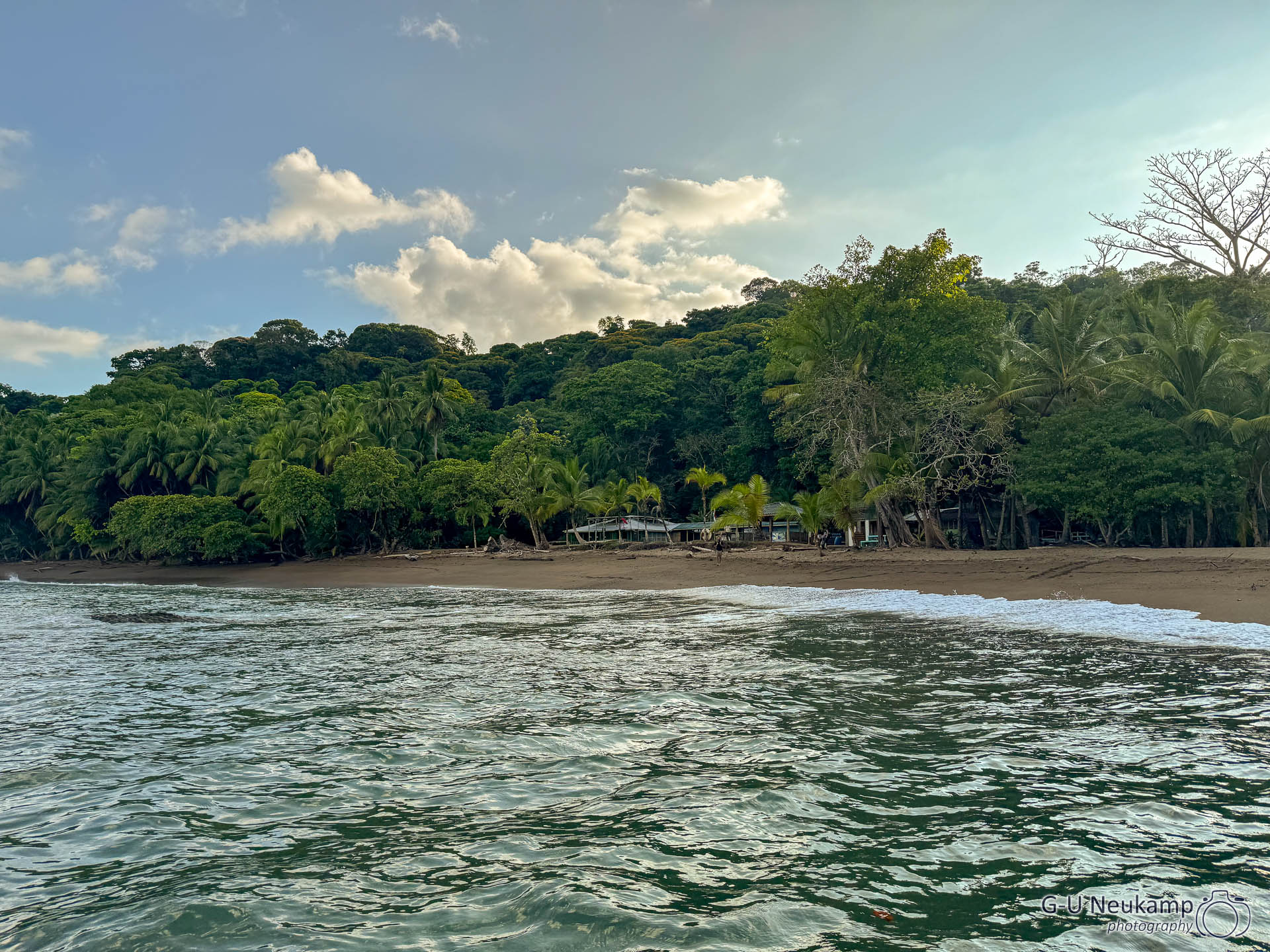
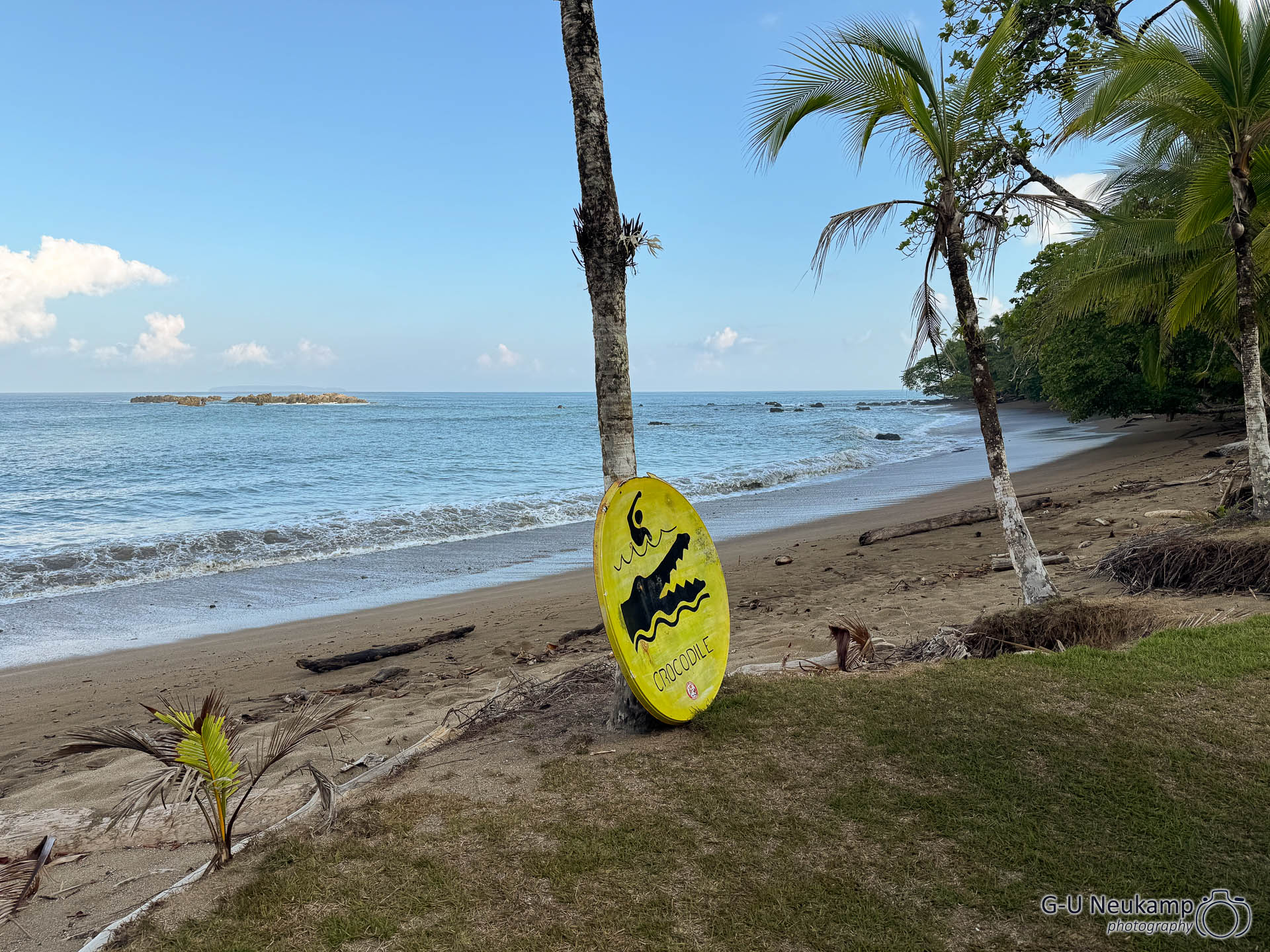
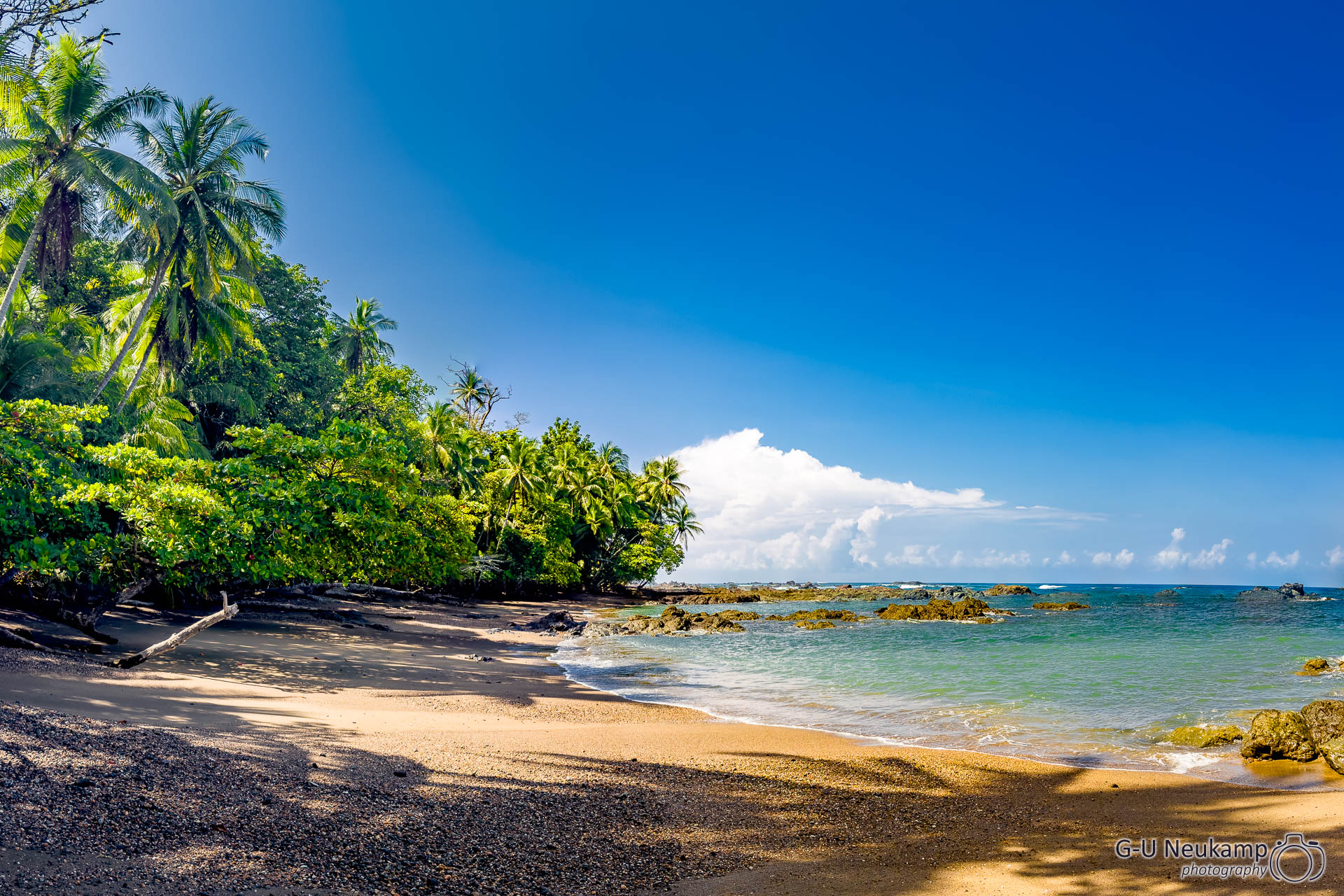
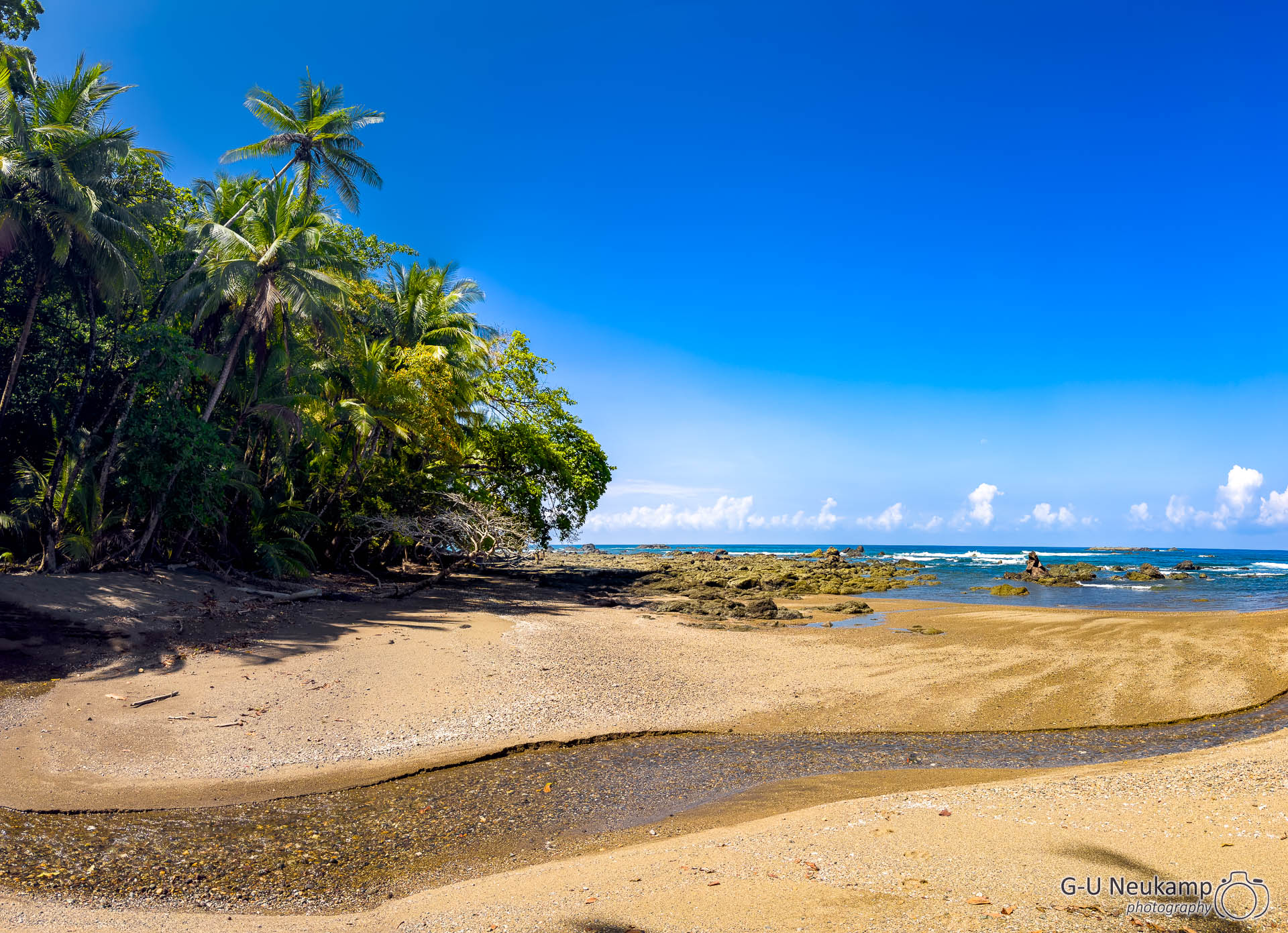
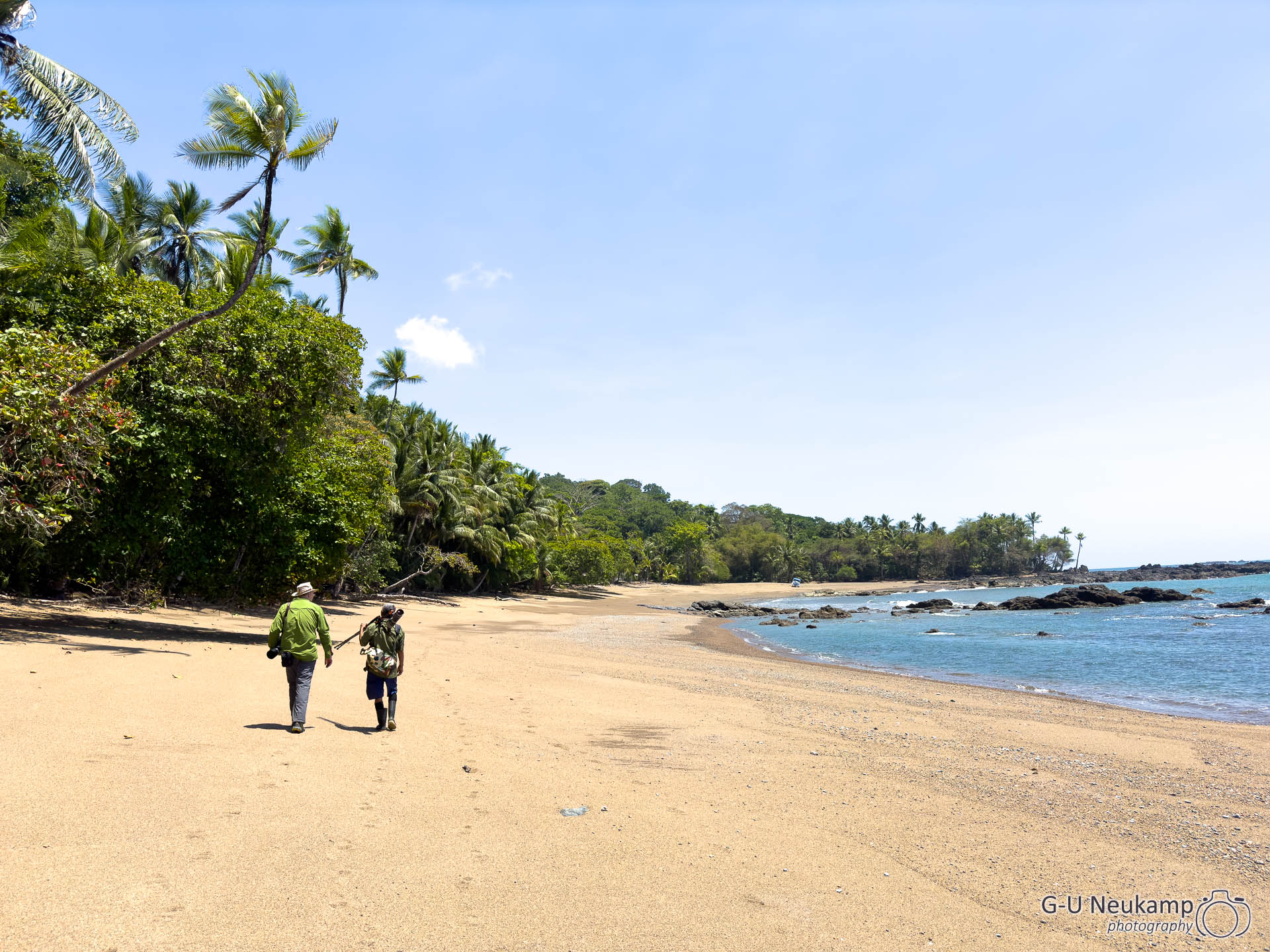
Then we set off on the strenuous hike into the park with 31° C and high humidity. First we looked for the scarlet macaws again and found them quite quickly. We followed their loud cries and found them in the almond trees on the shore - almonds are their favorite food.
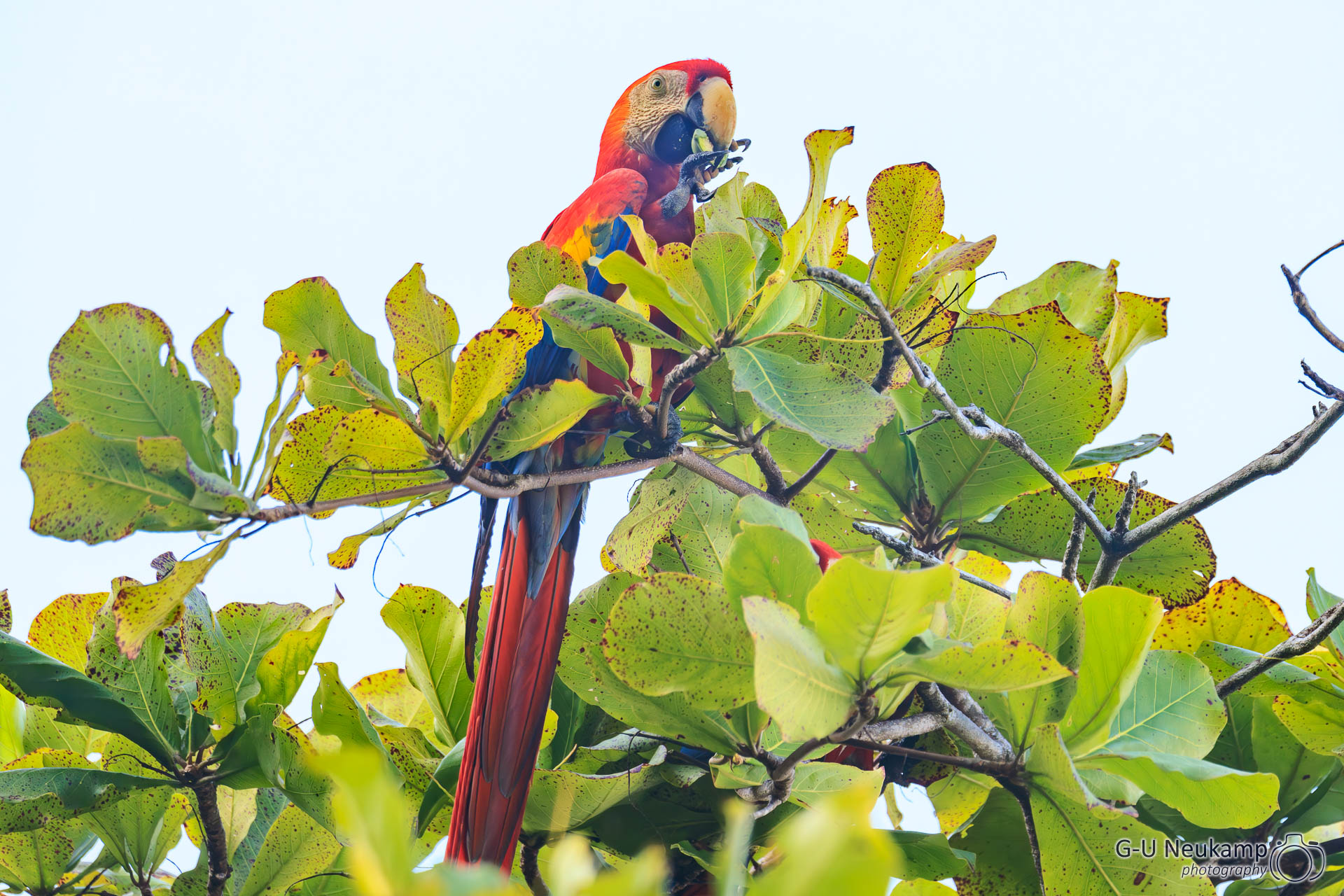
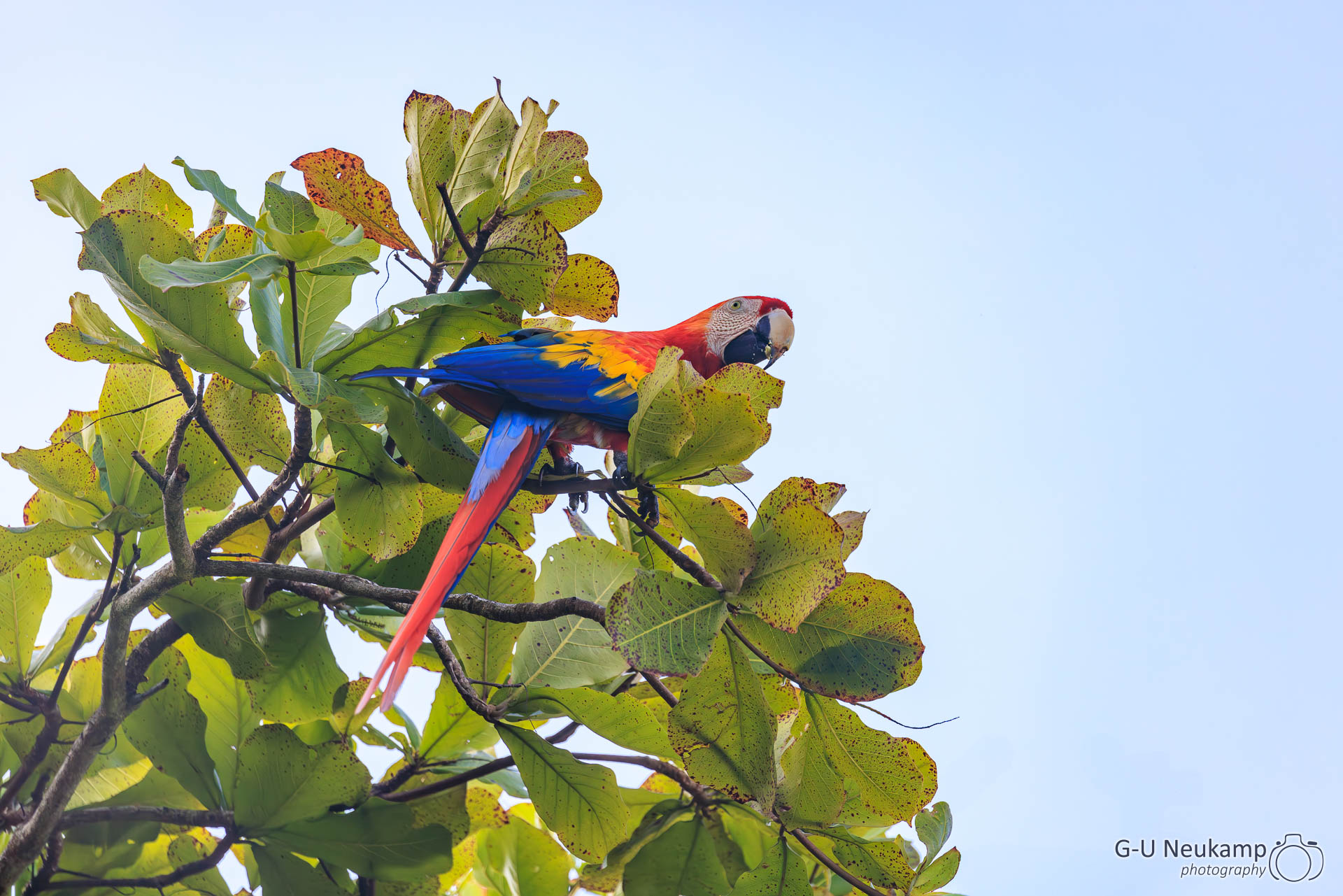

Then we continued into the dense jungle. First of all, we spotted lots of monkeys in the trees:



But there was also a lot else to see, here is a small selection:


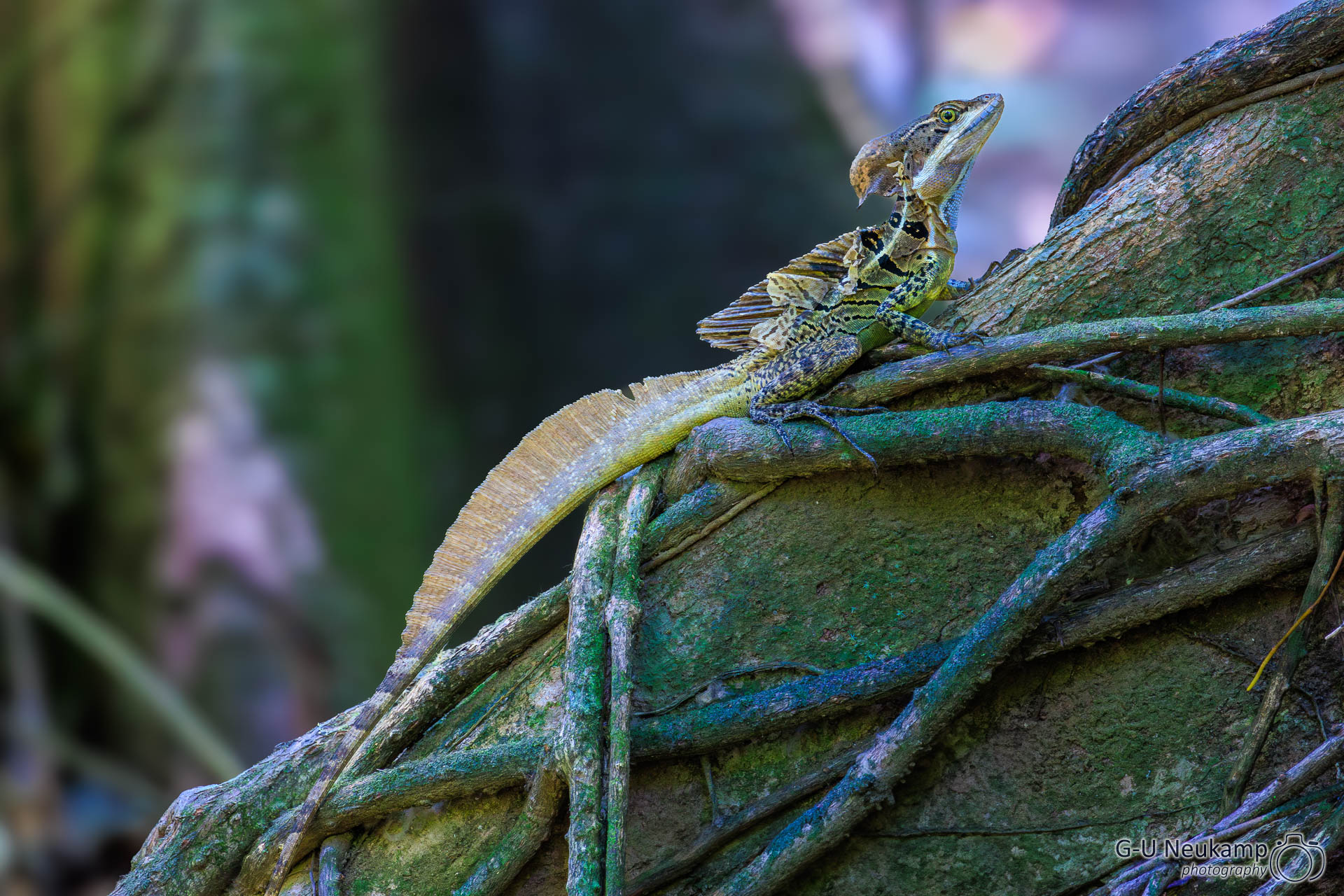
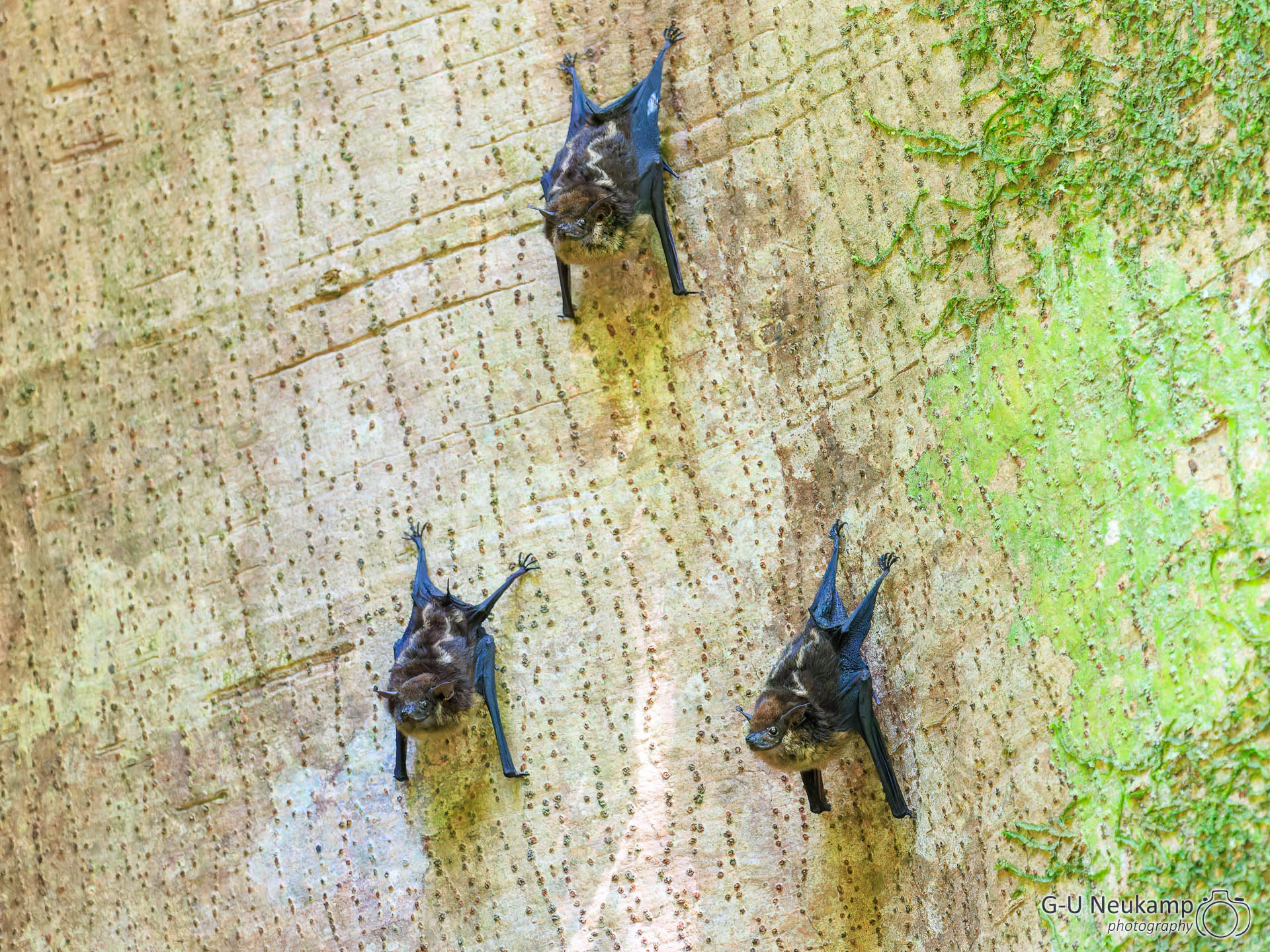
After a midday picnic, we set off with Manuel one last time, as two tapirs had been spotted. We found them too:
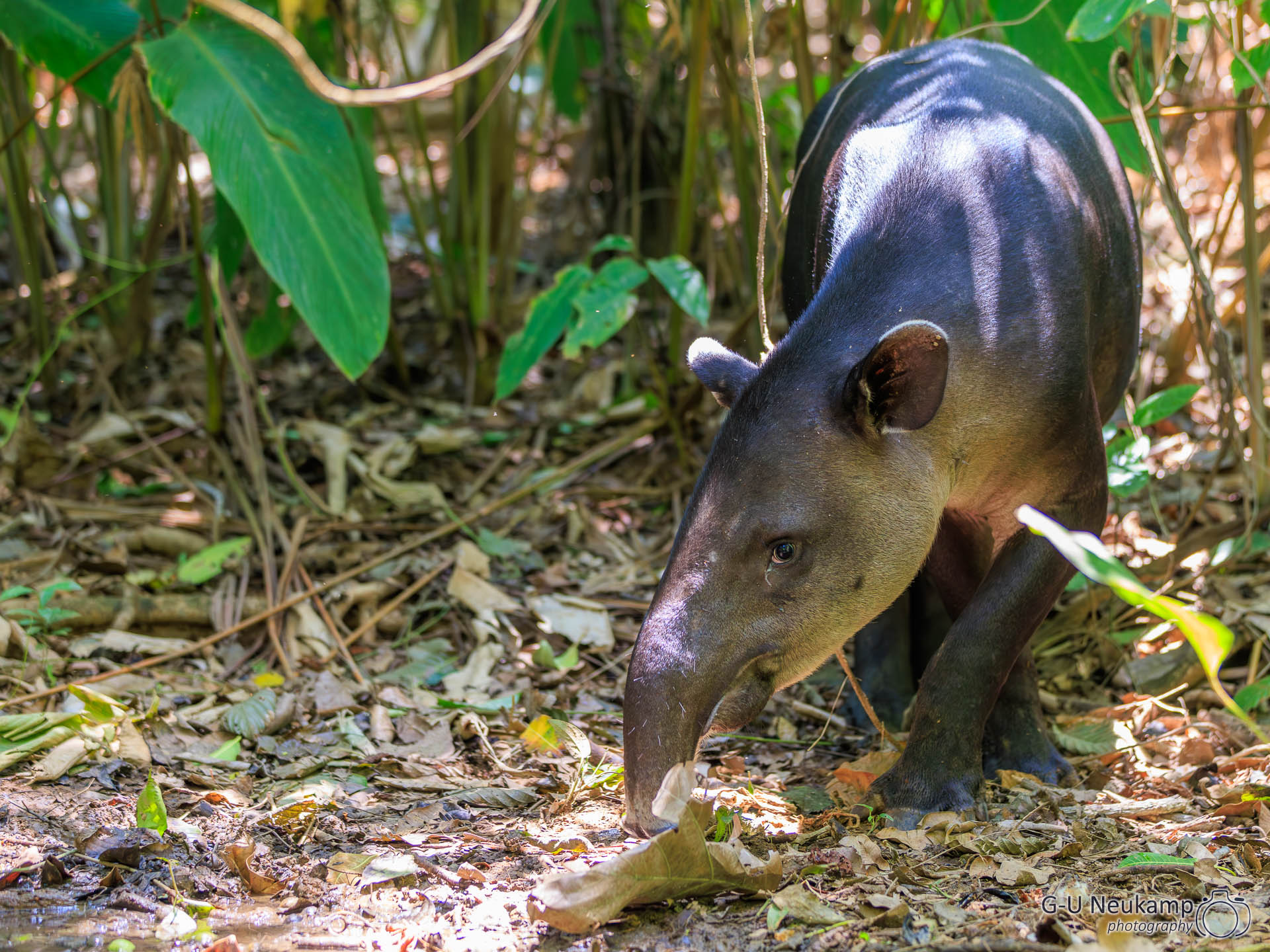
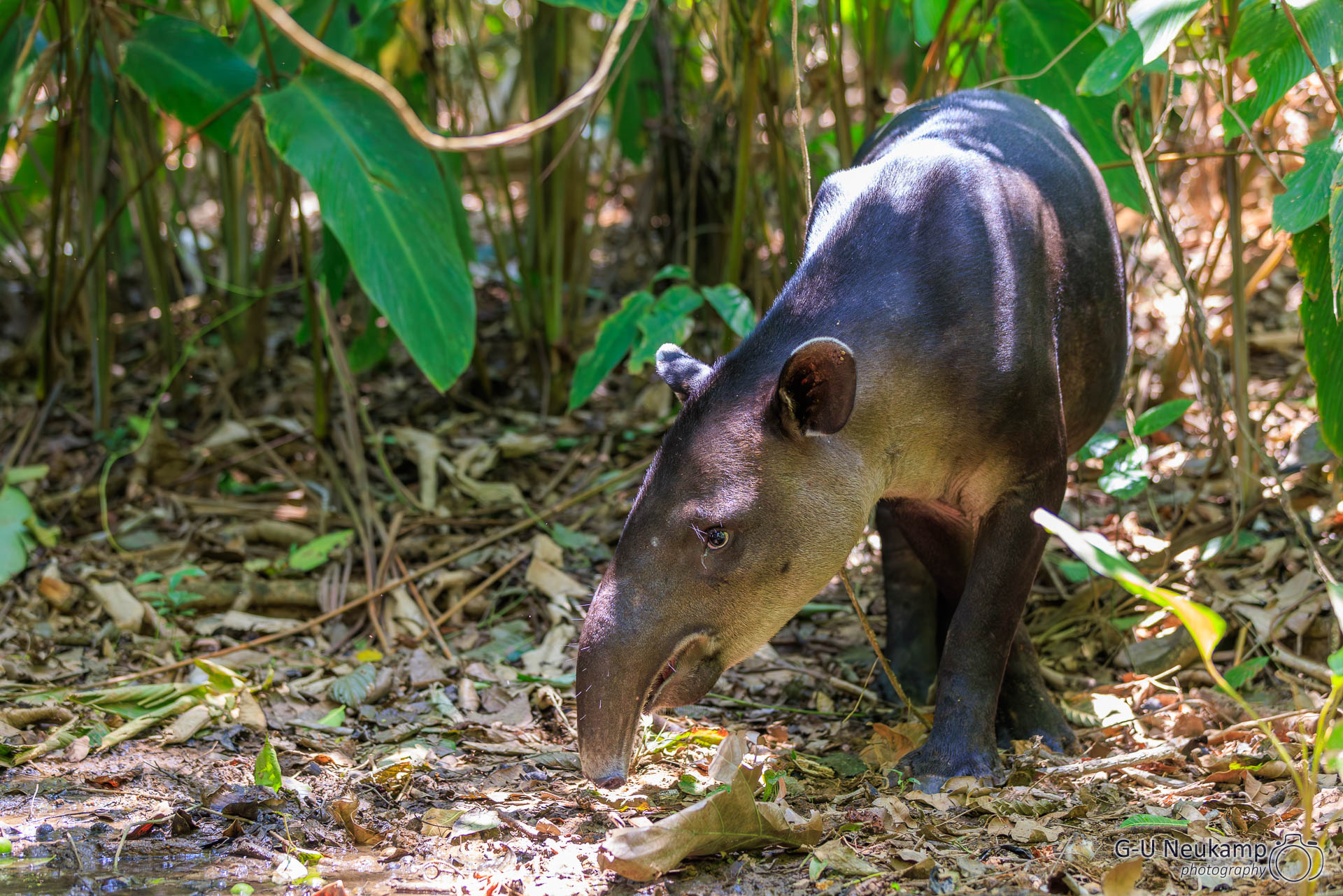
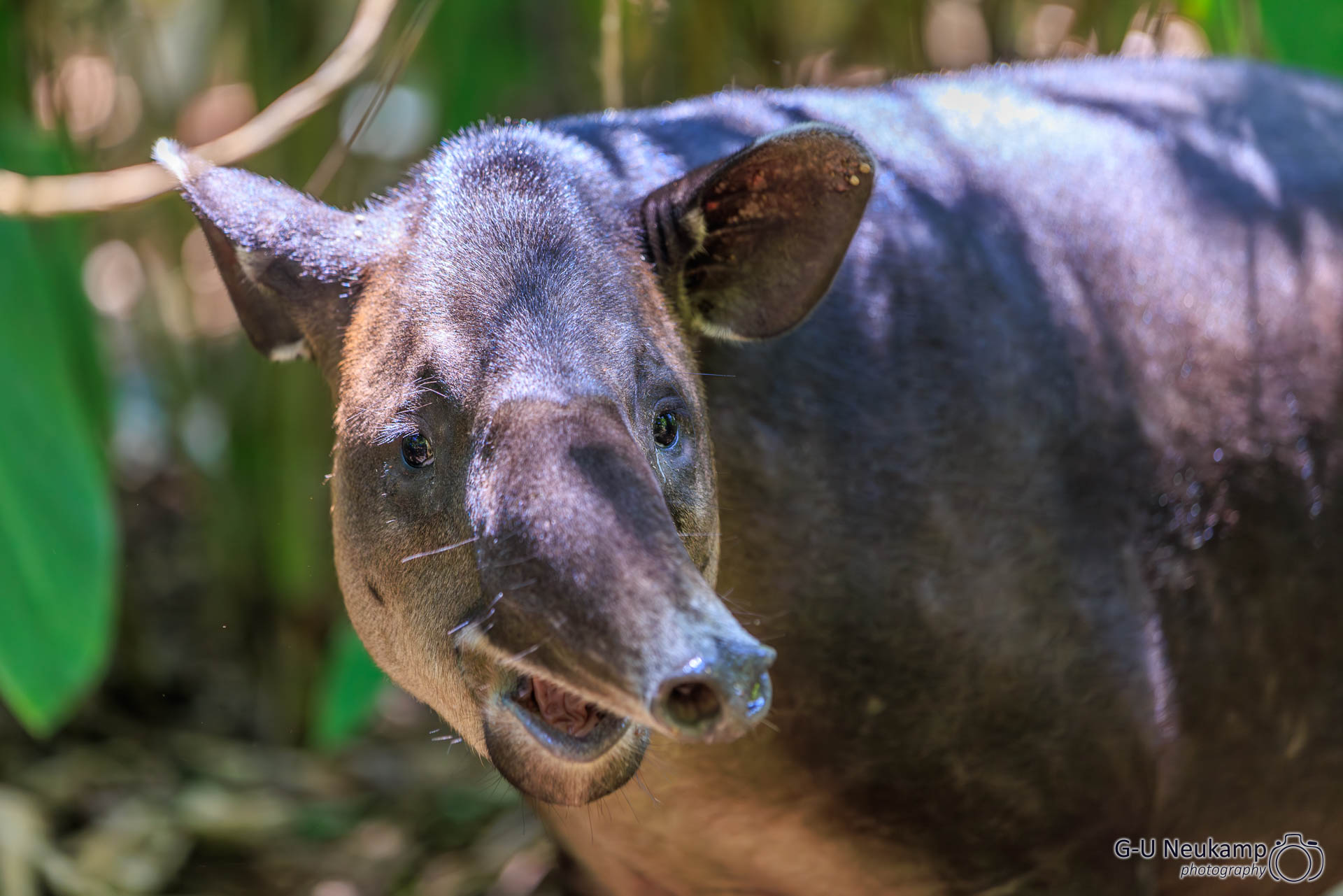
We then took the boat back again. We were all sweating profusely after the strenuous tour and treated ourselves to a cold beer after a refreshing shower.
